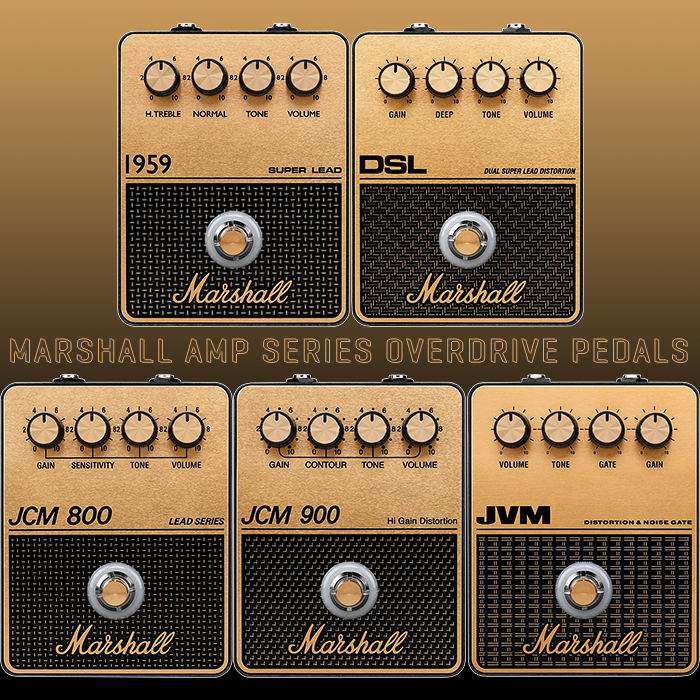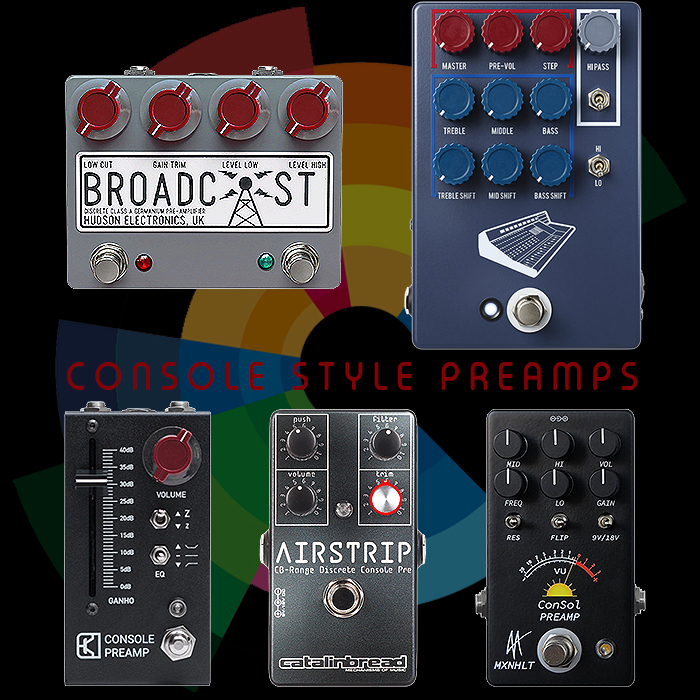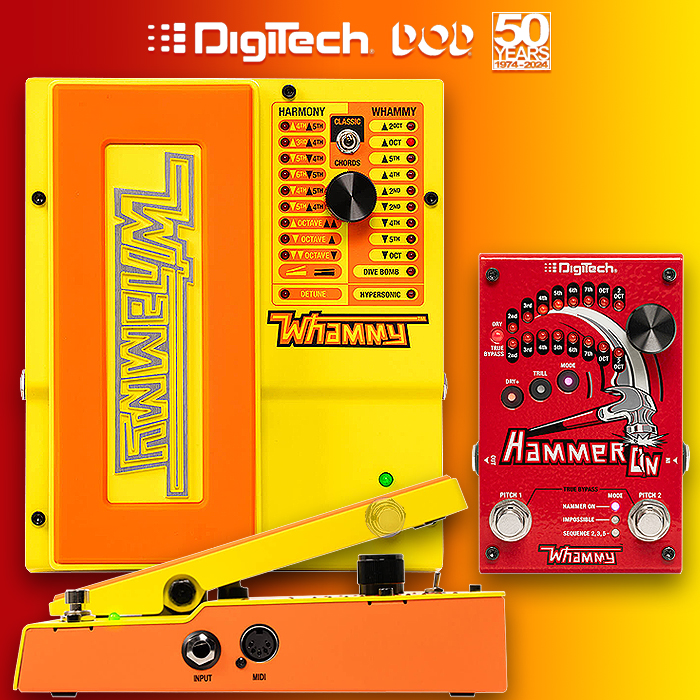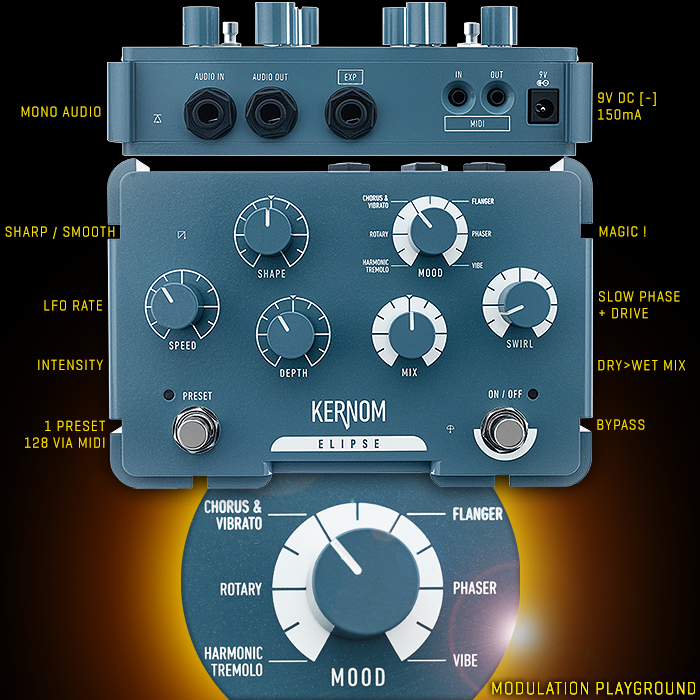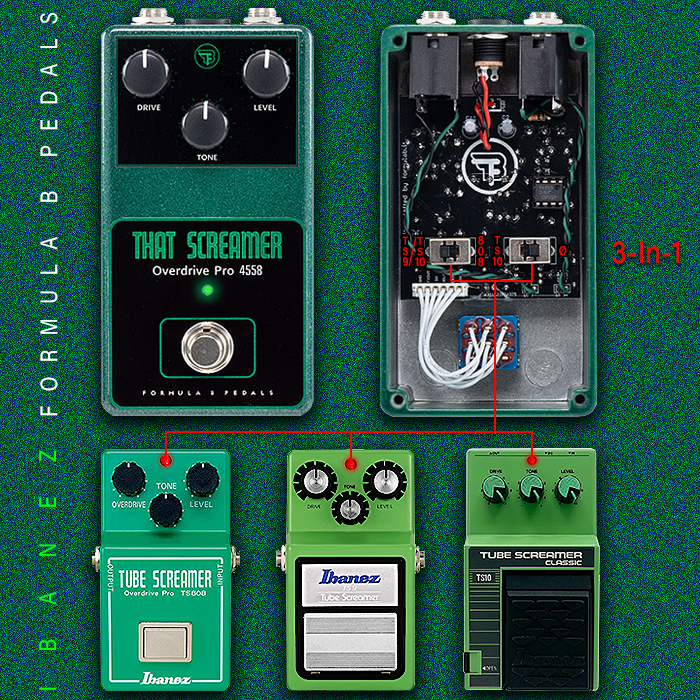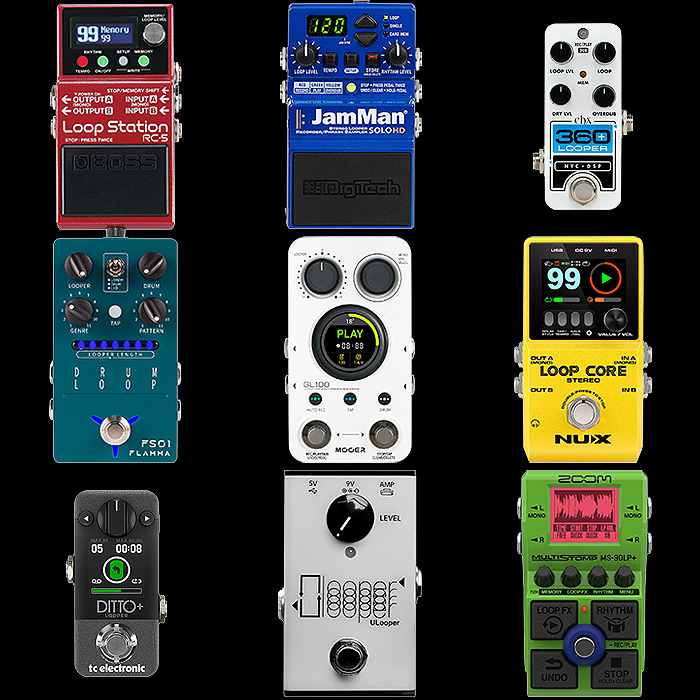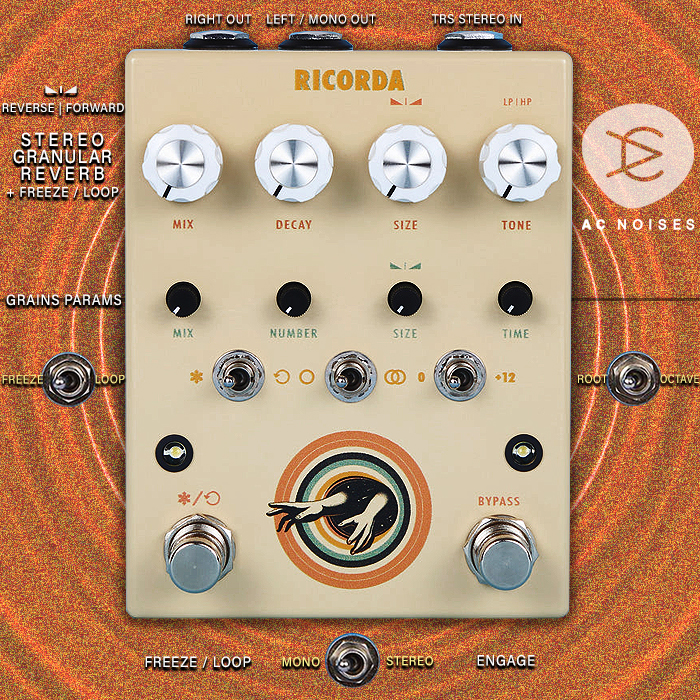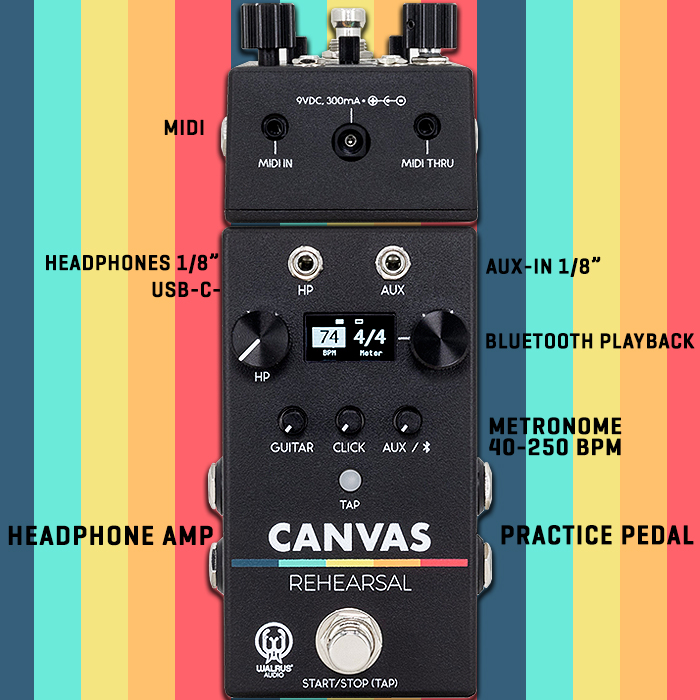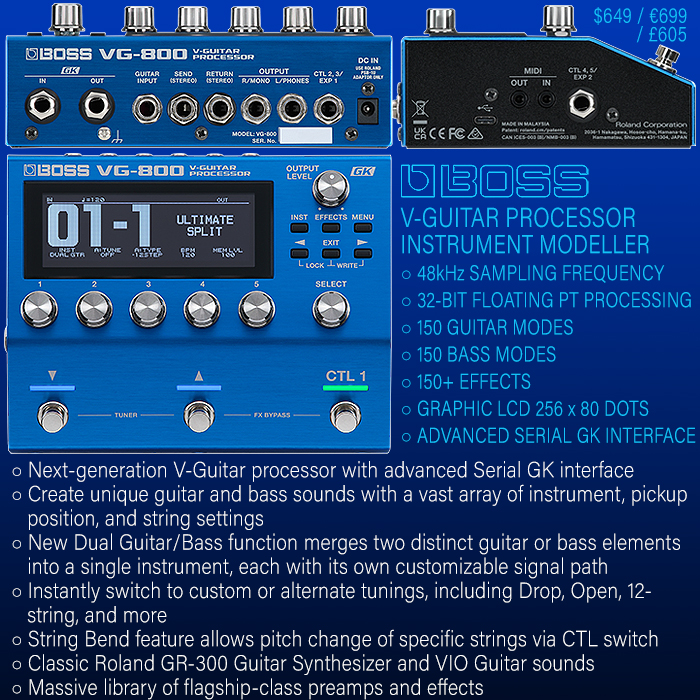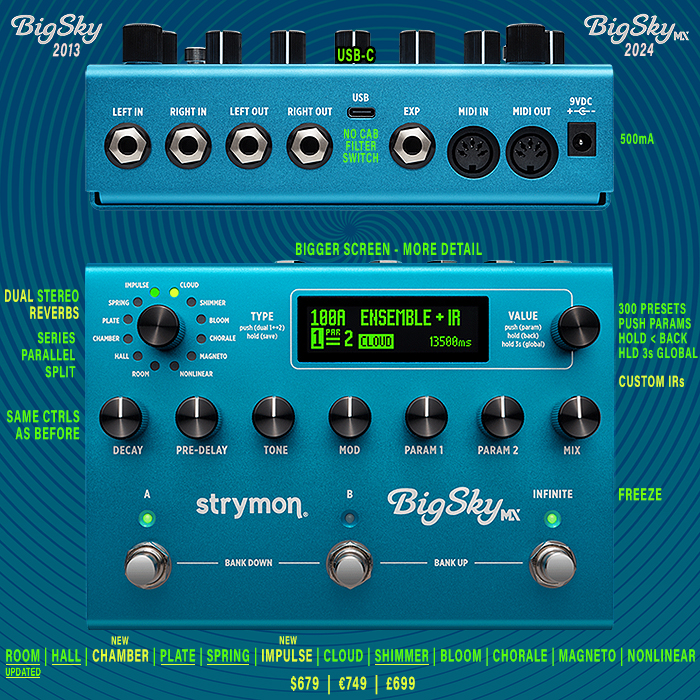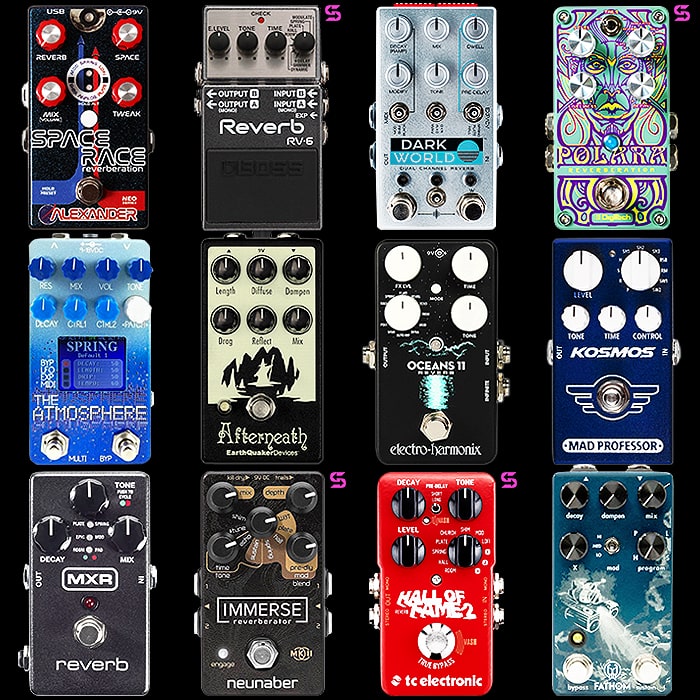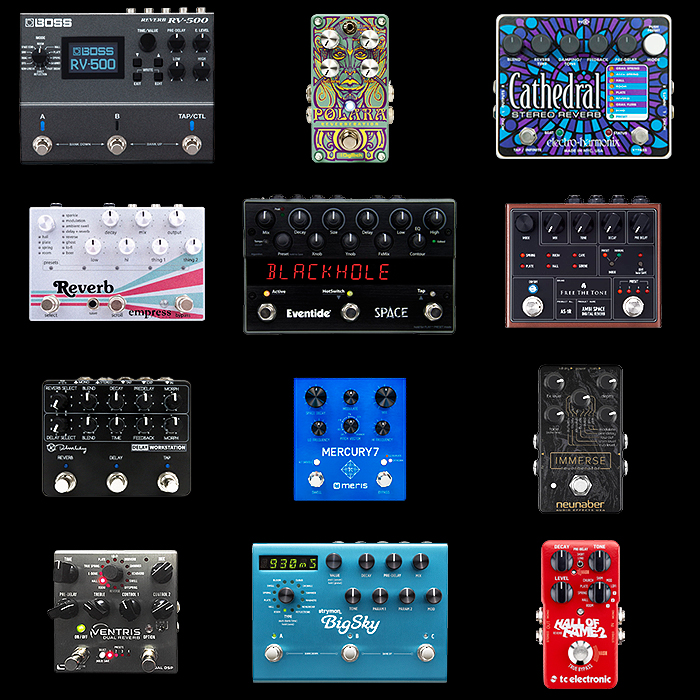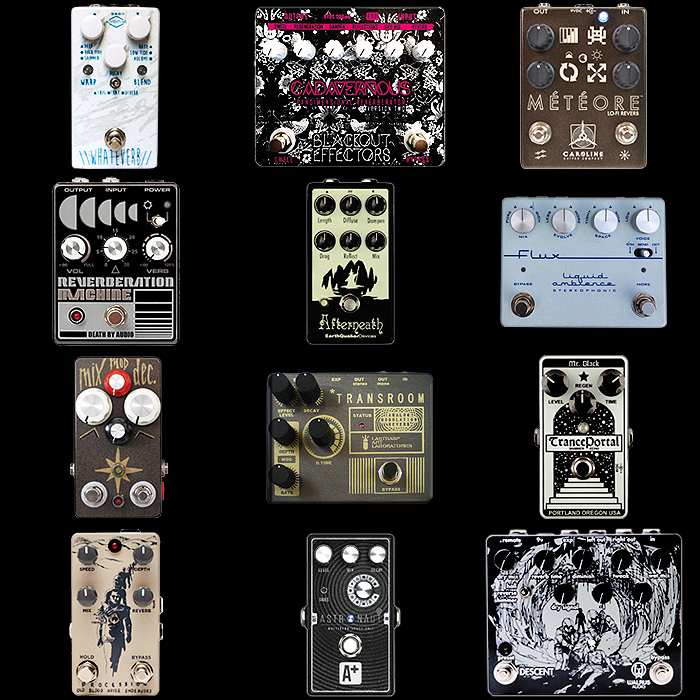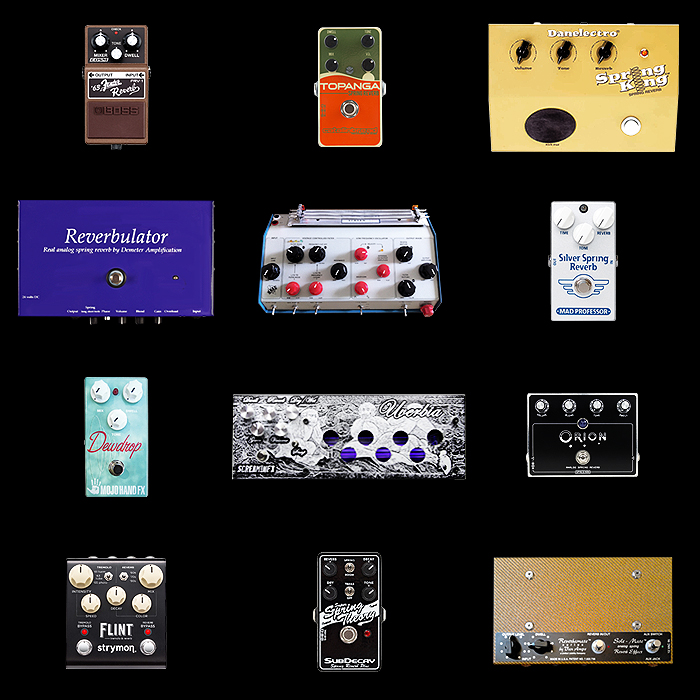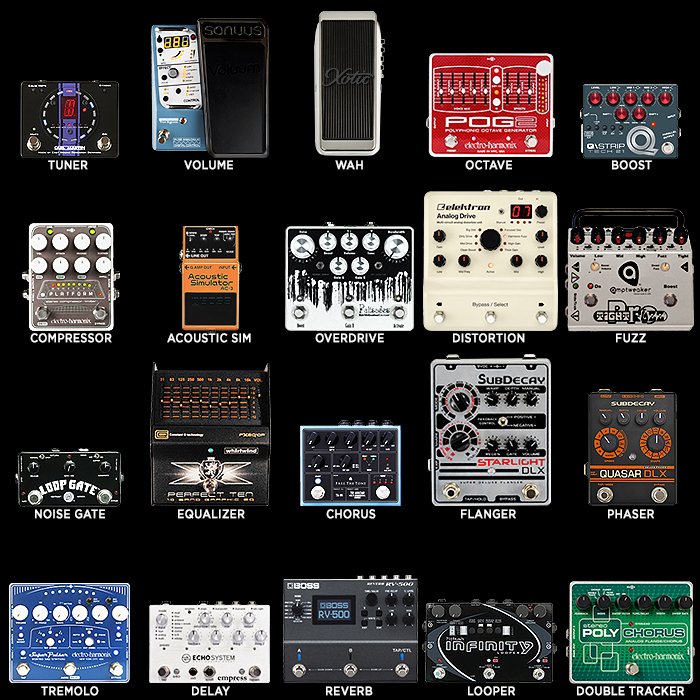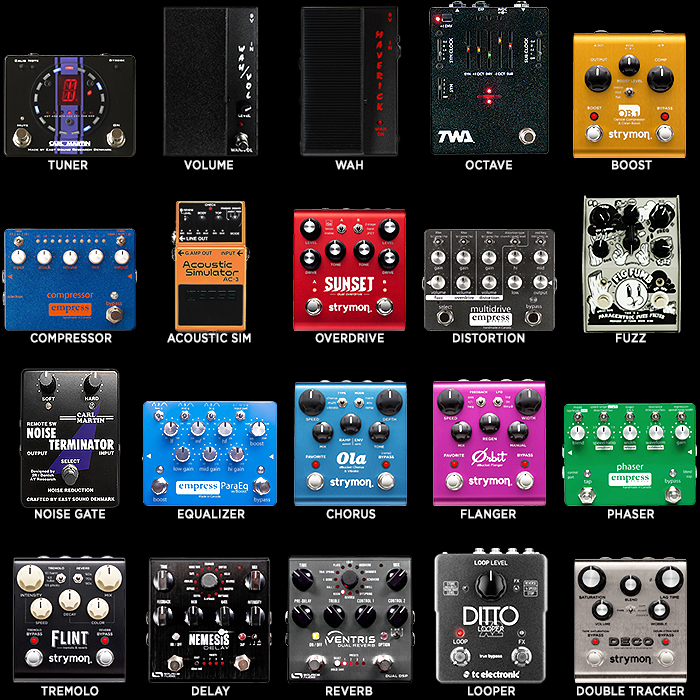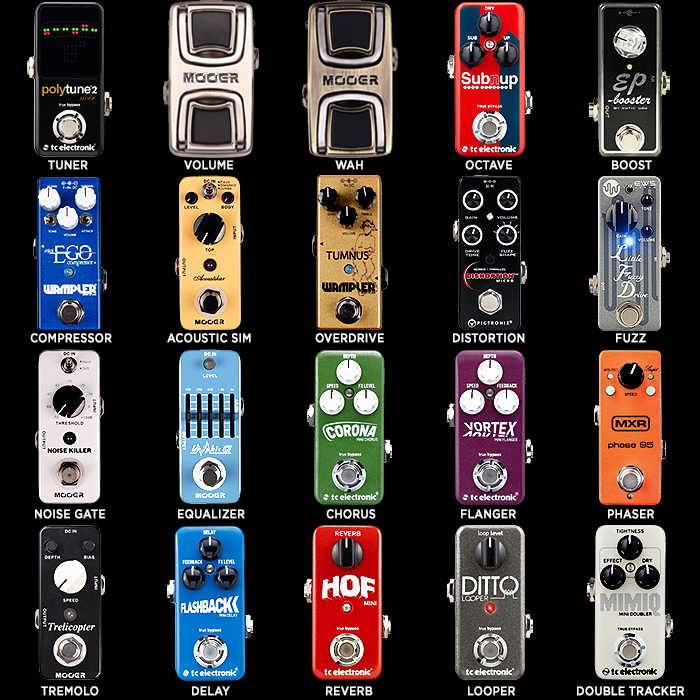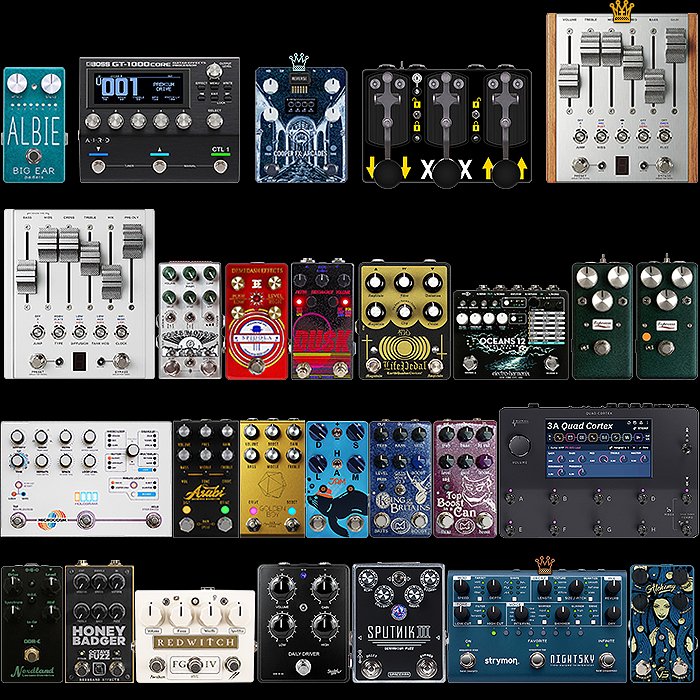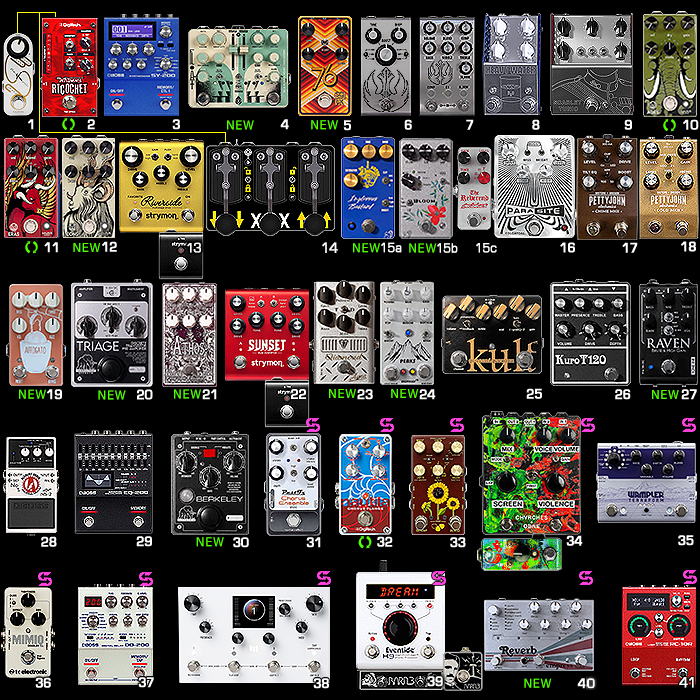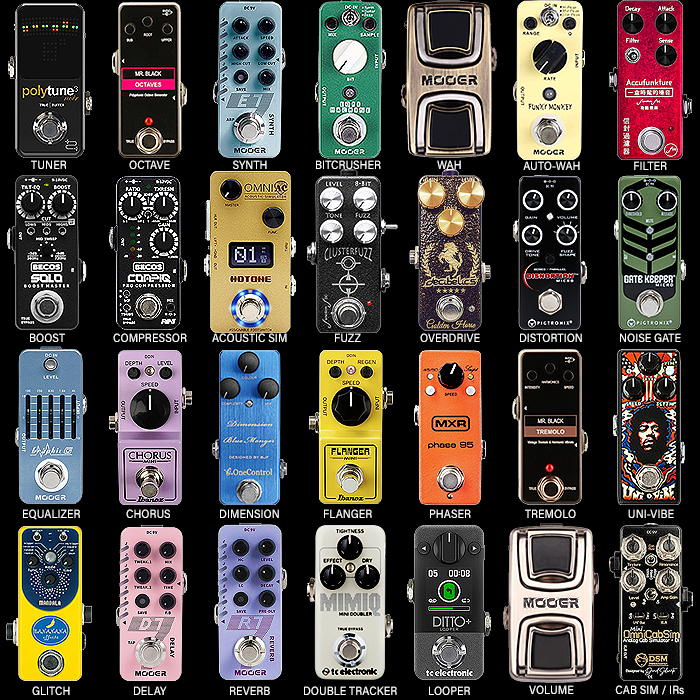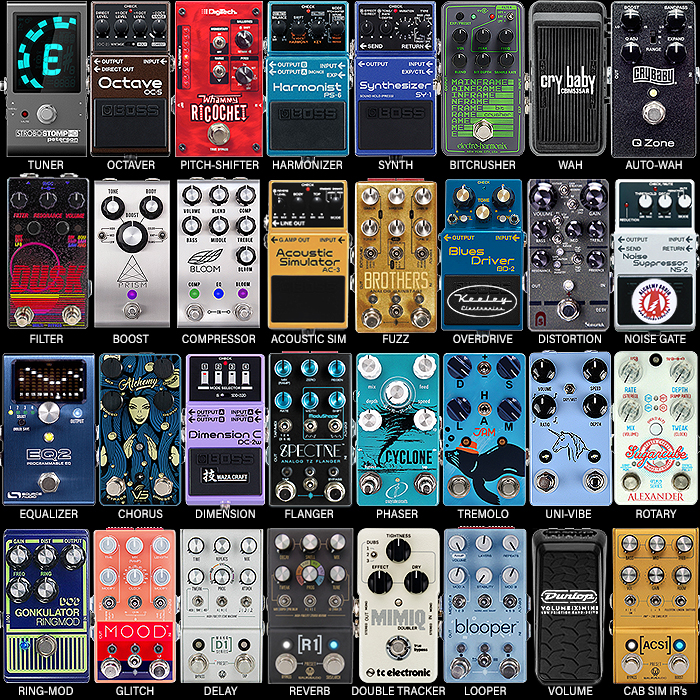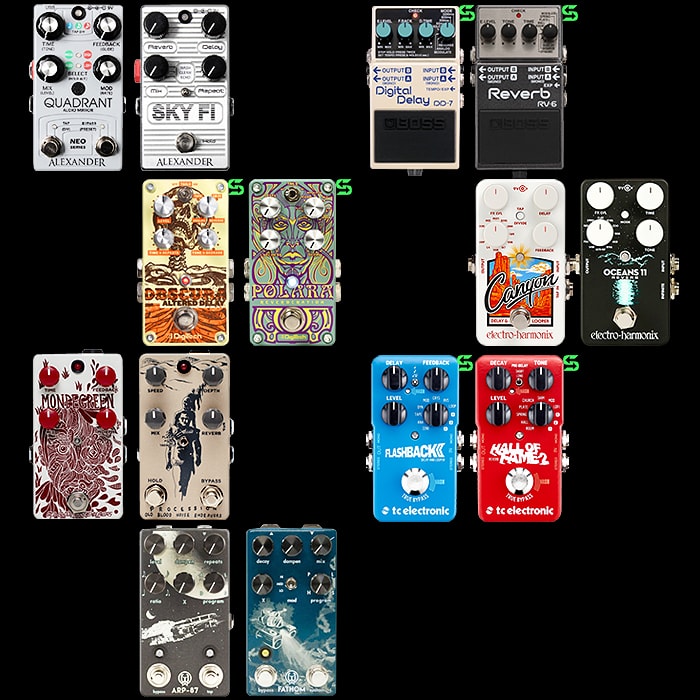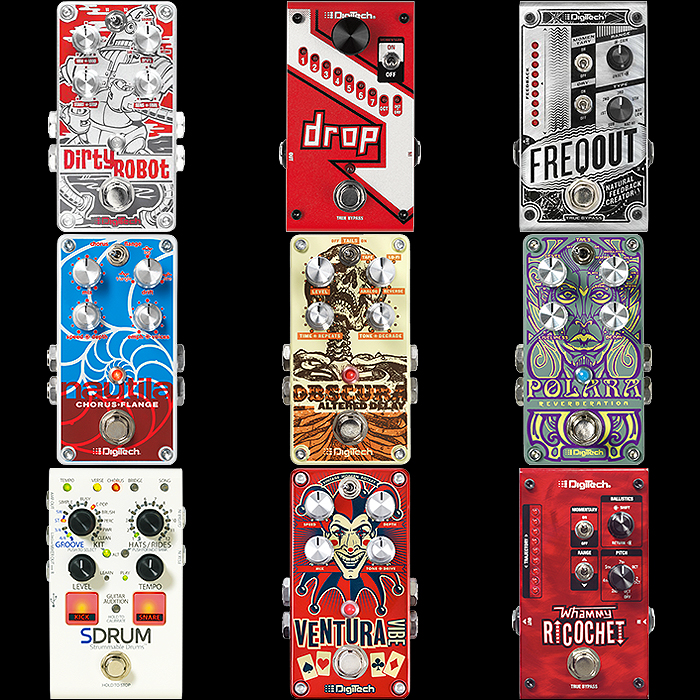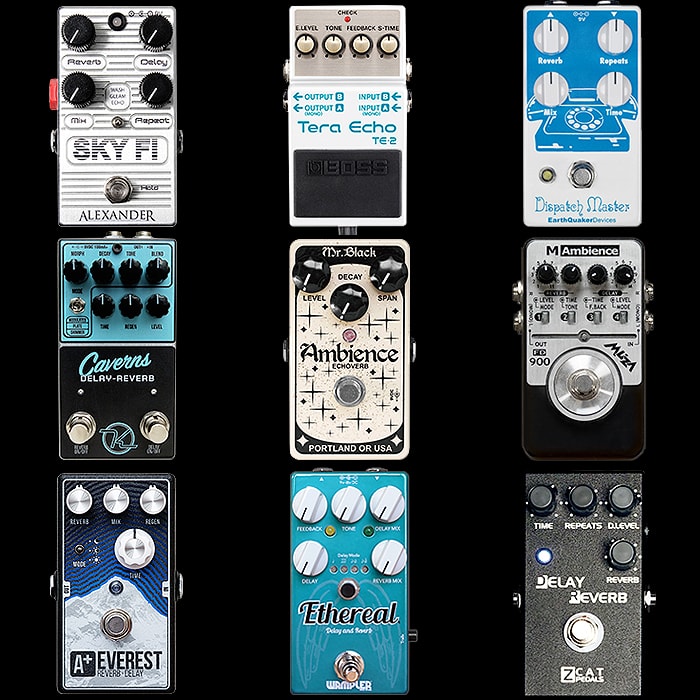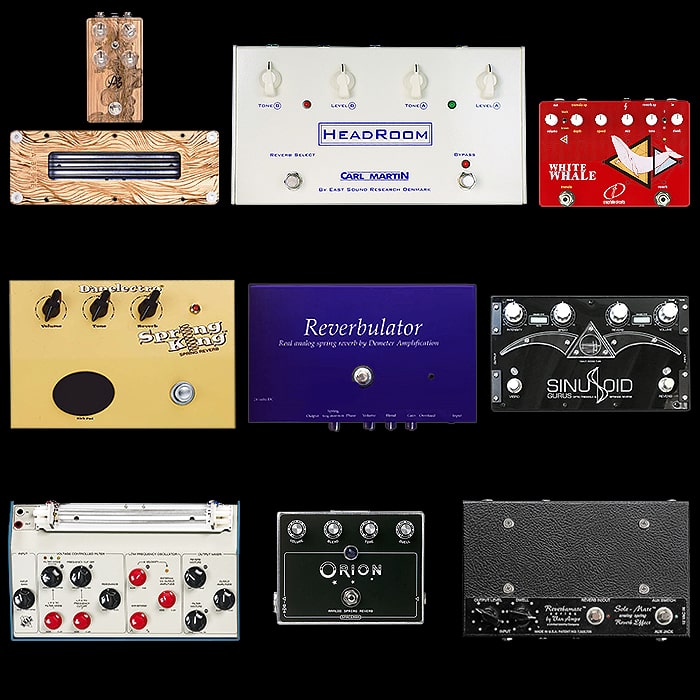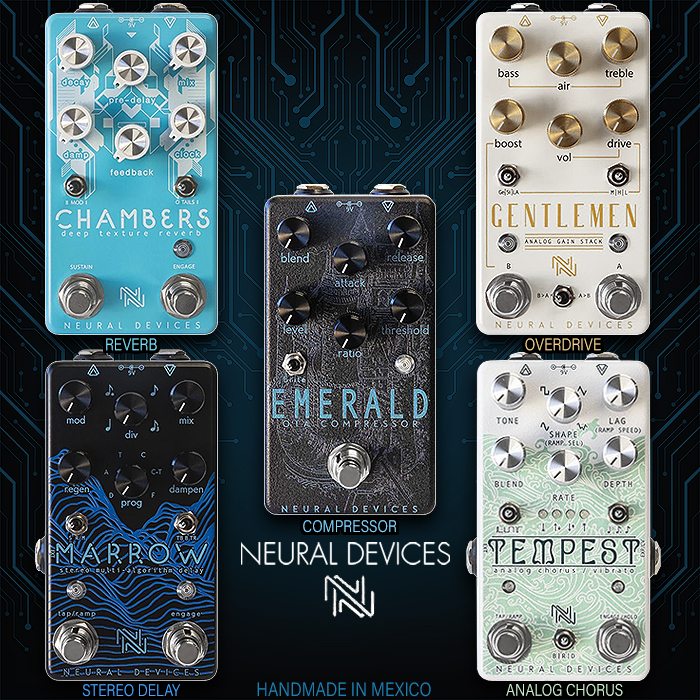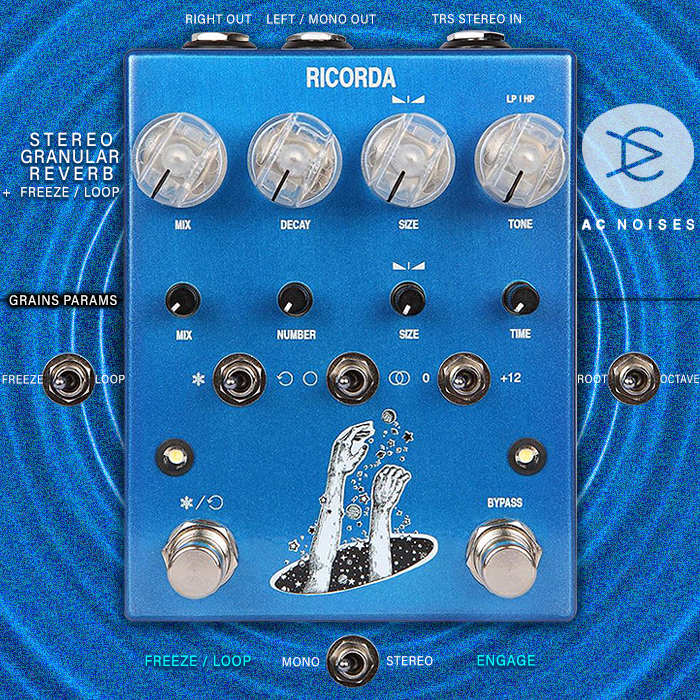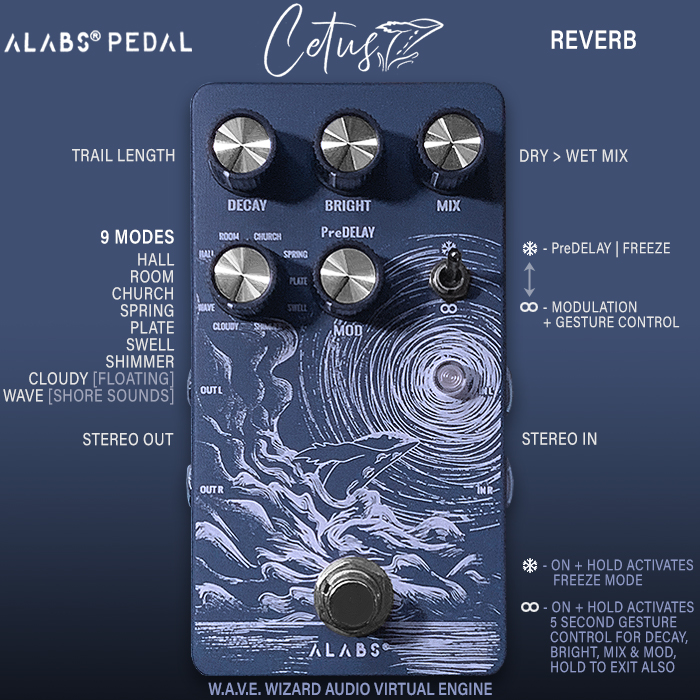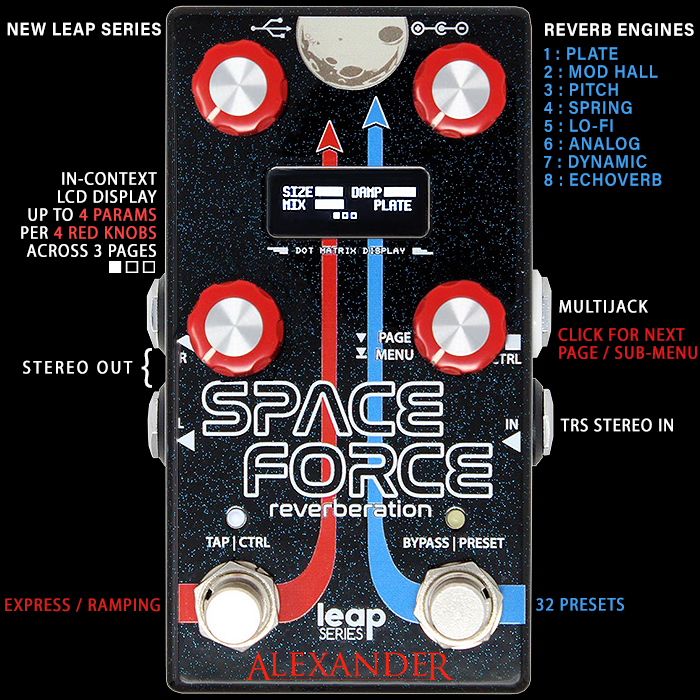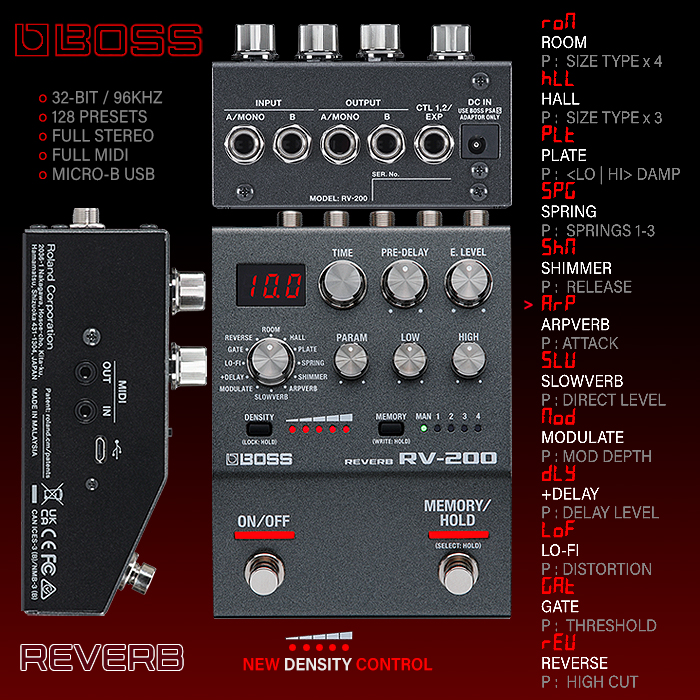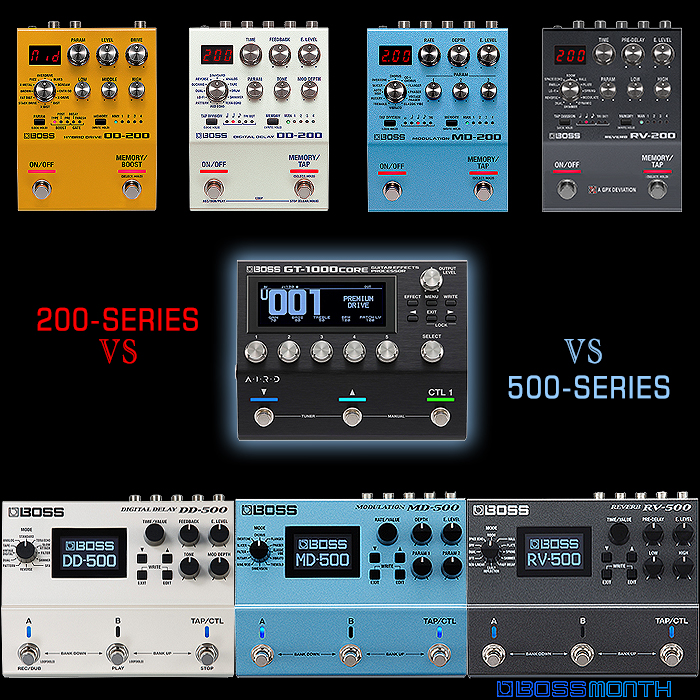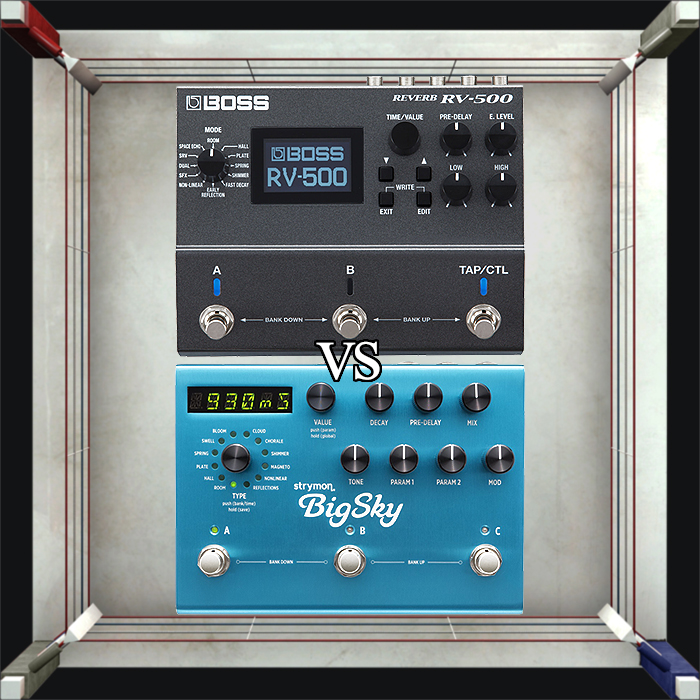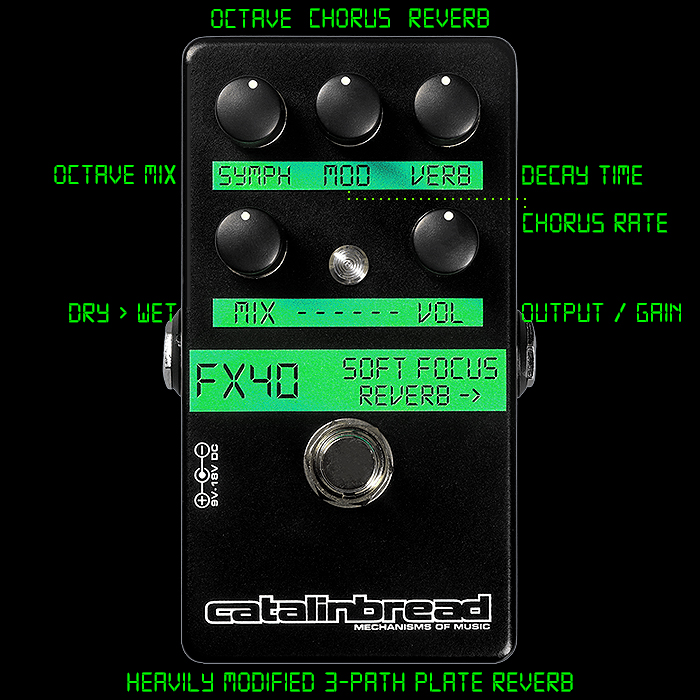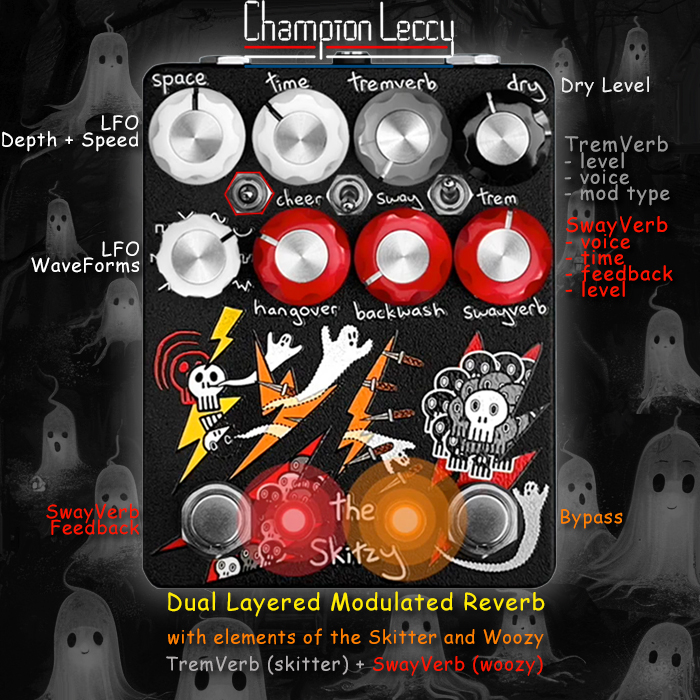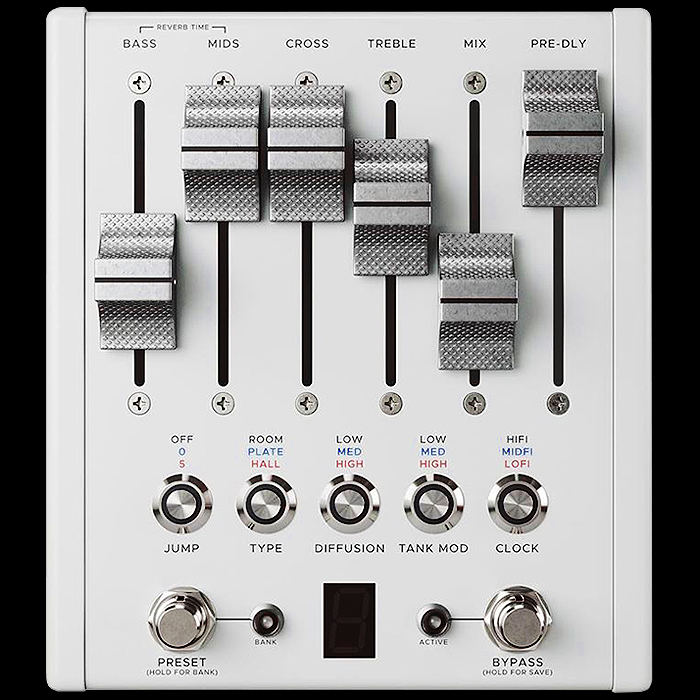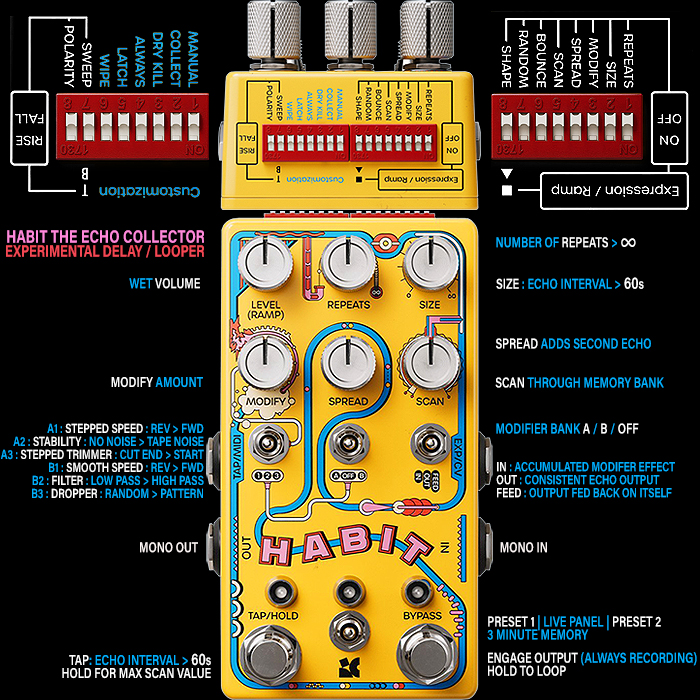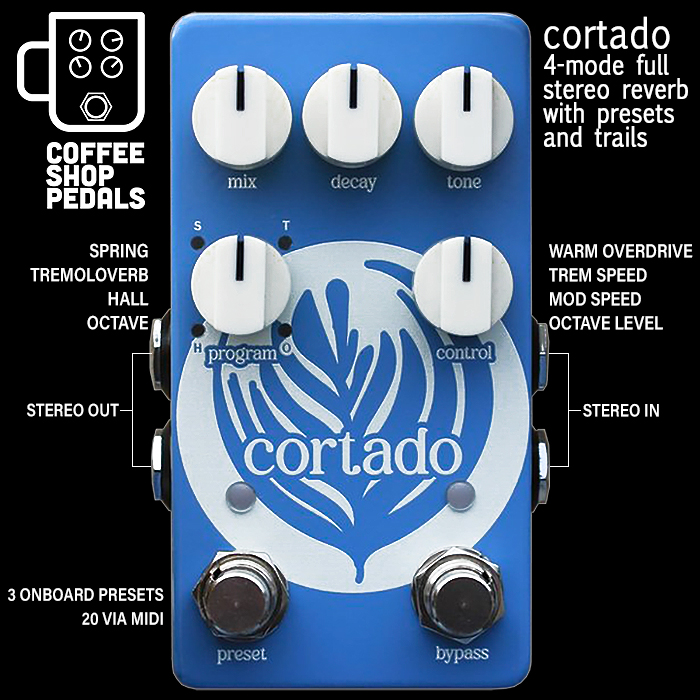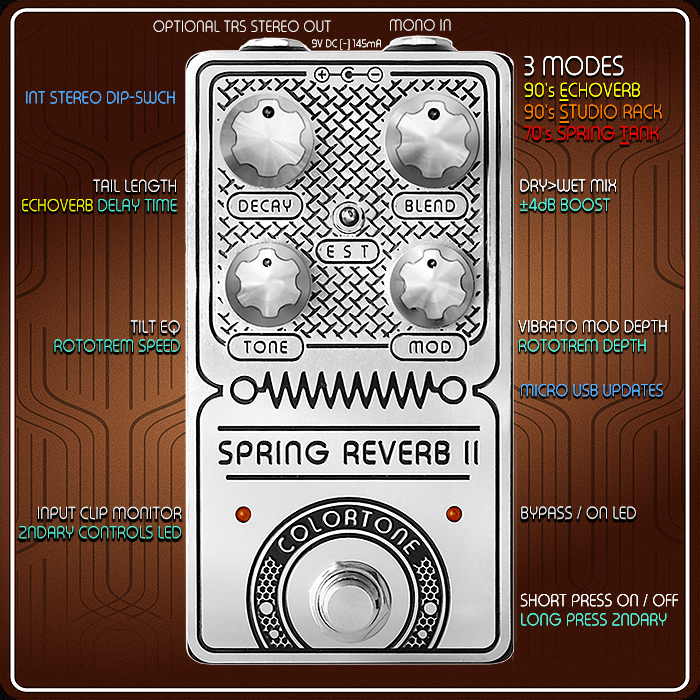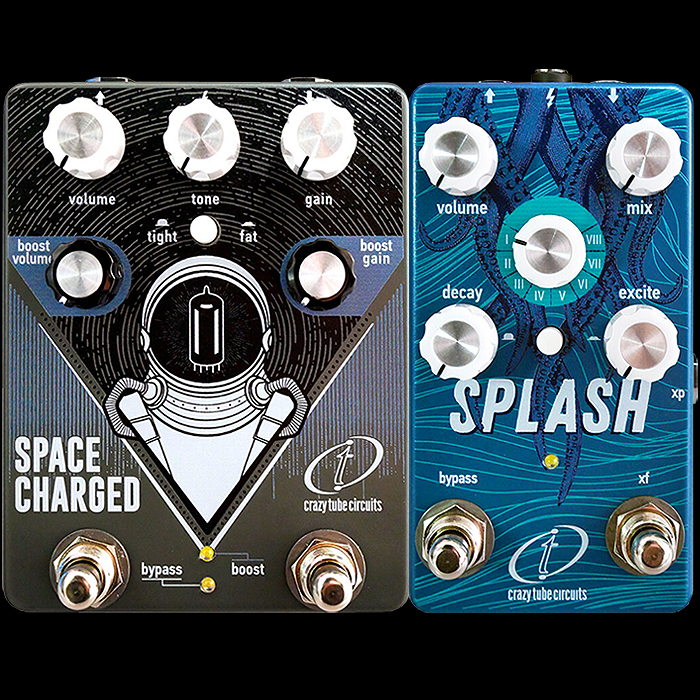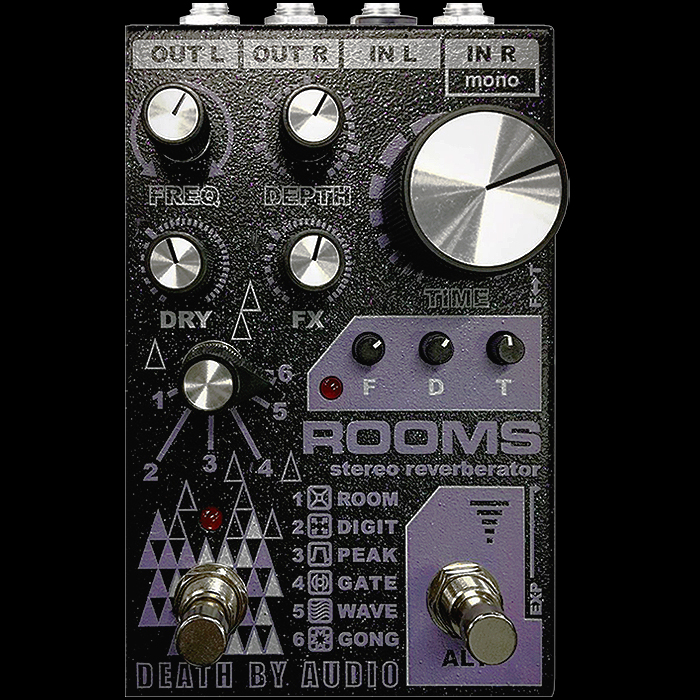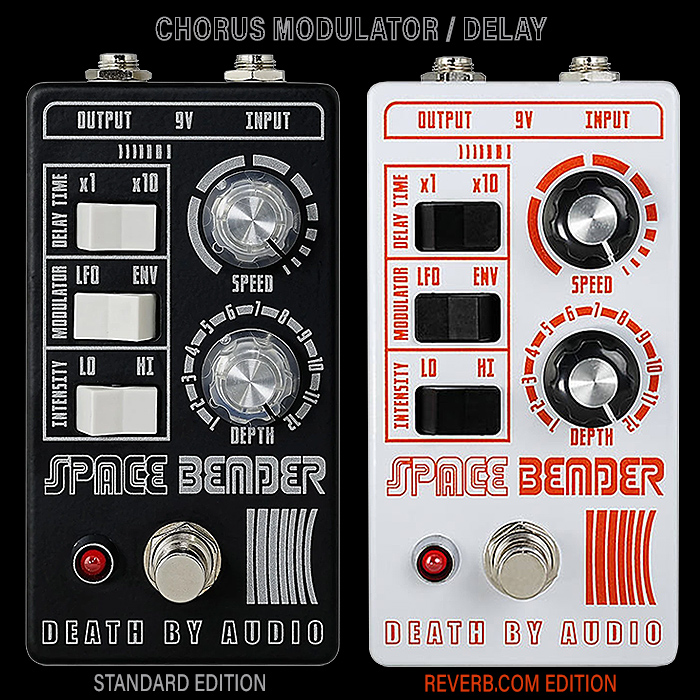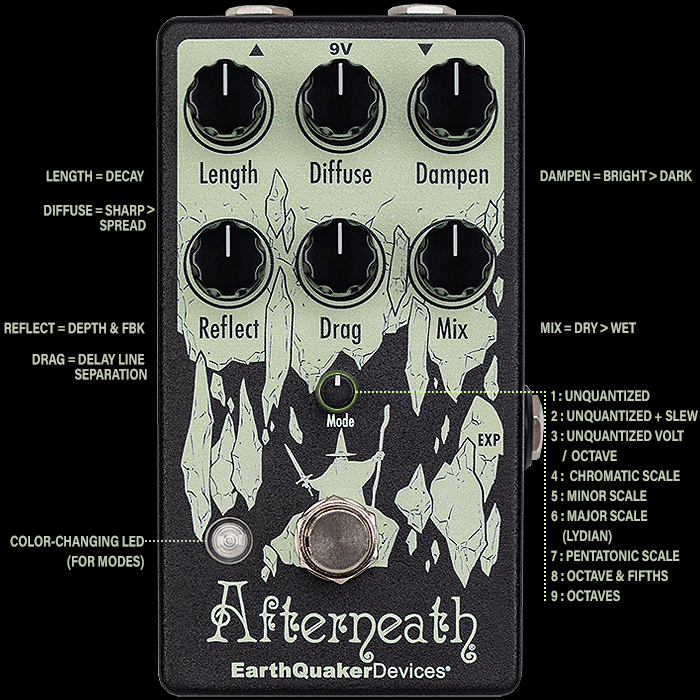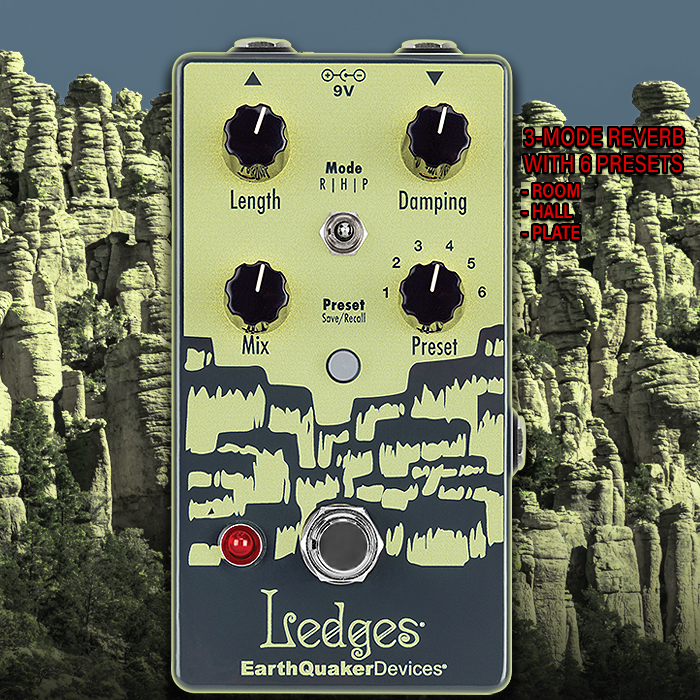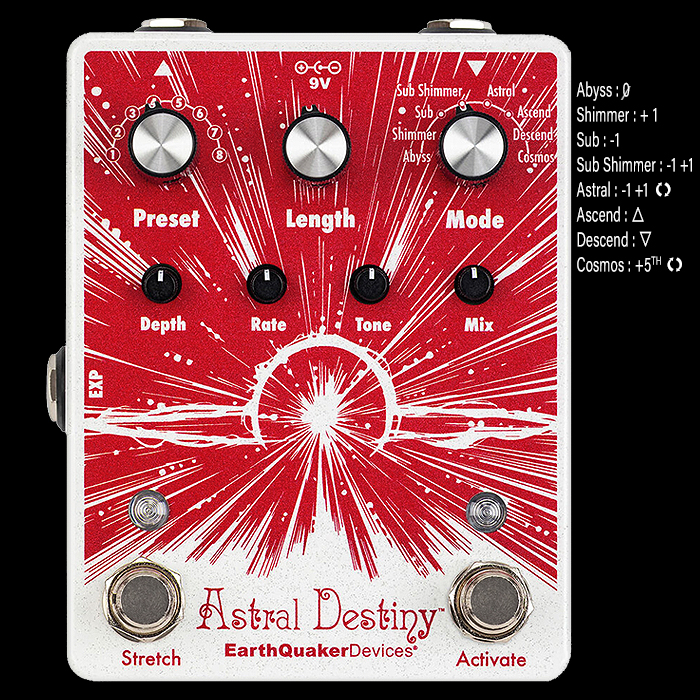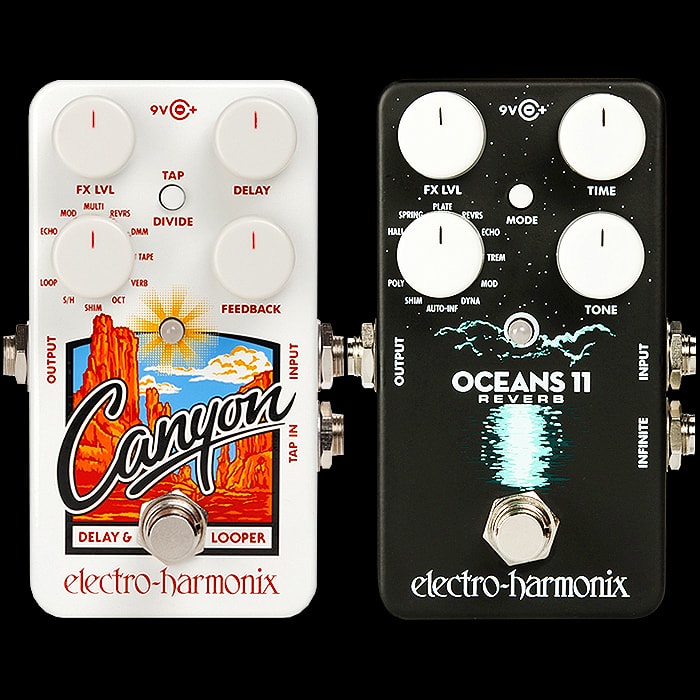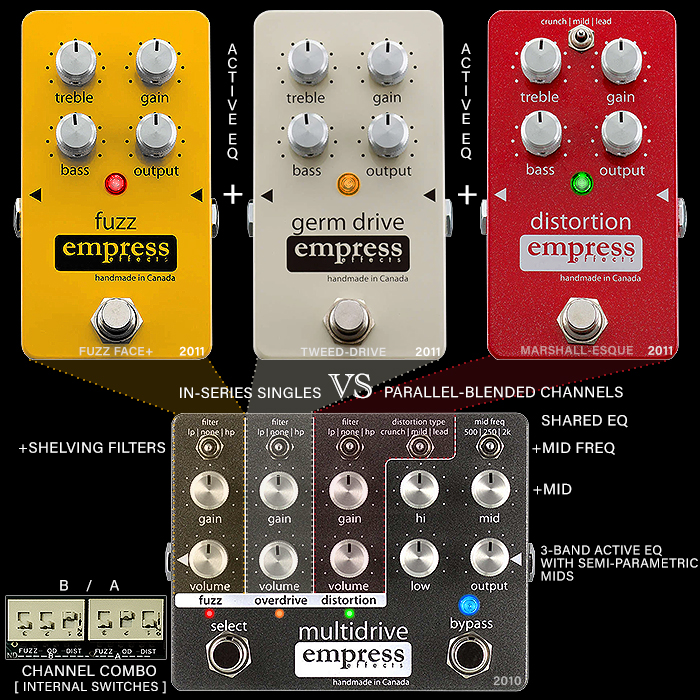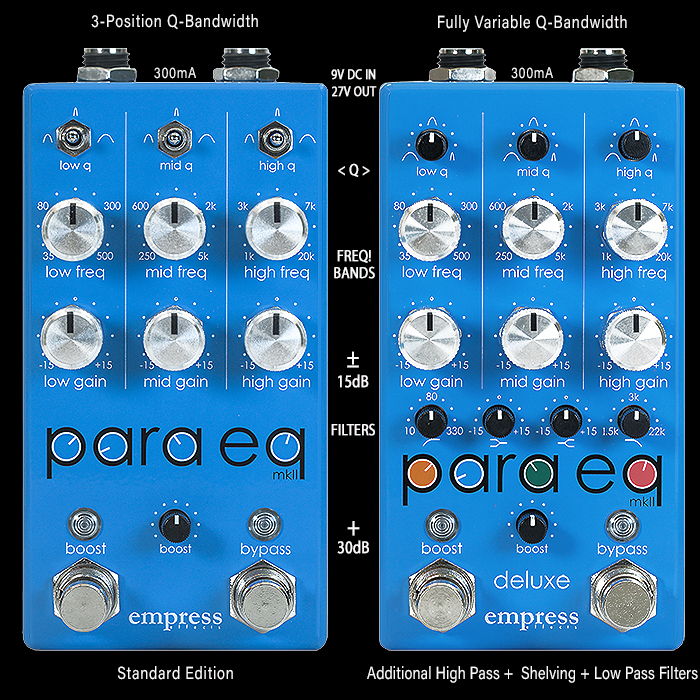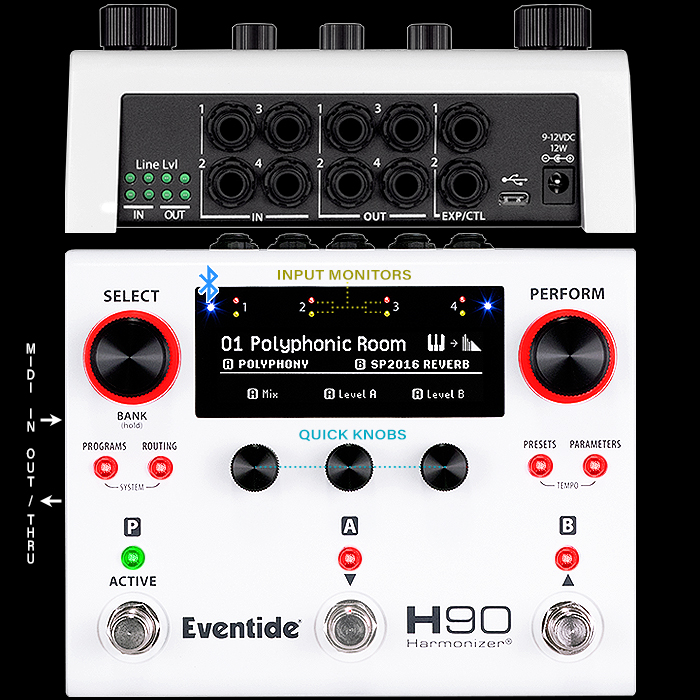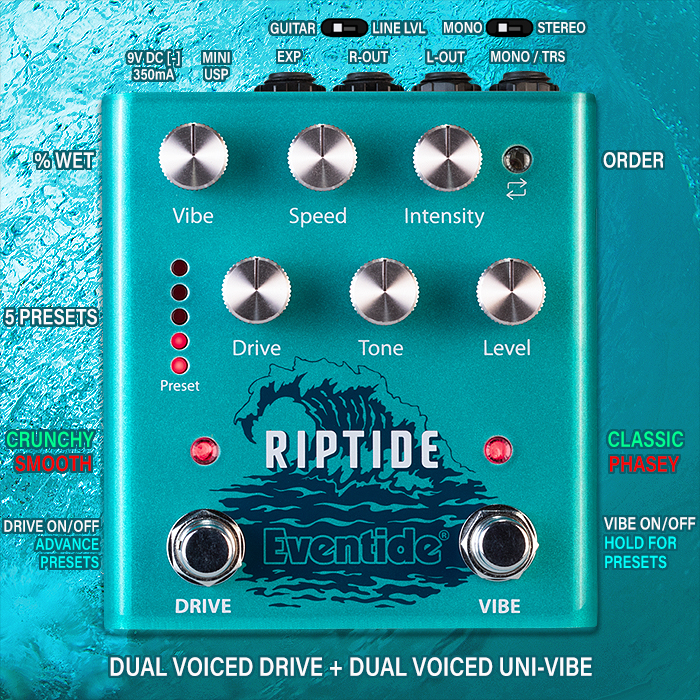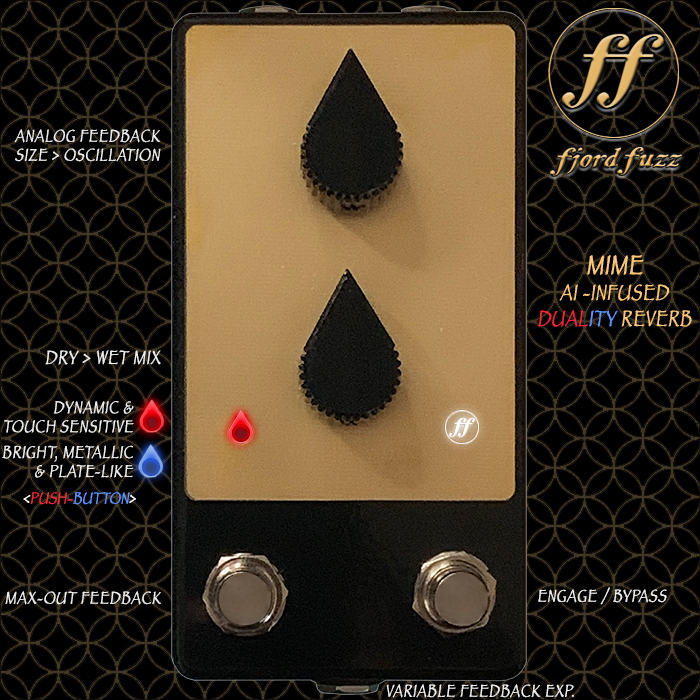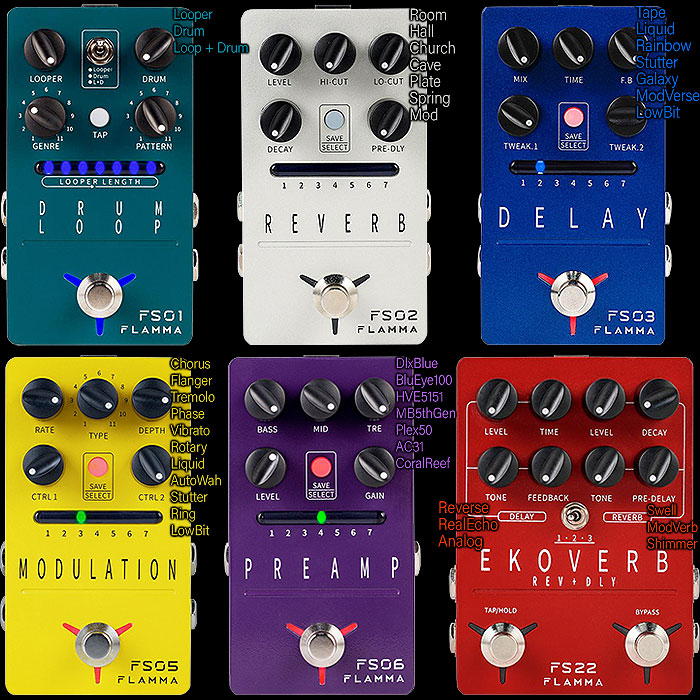2021 Top 20 Stereo Reverb Workstation Pedal Roundup
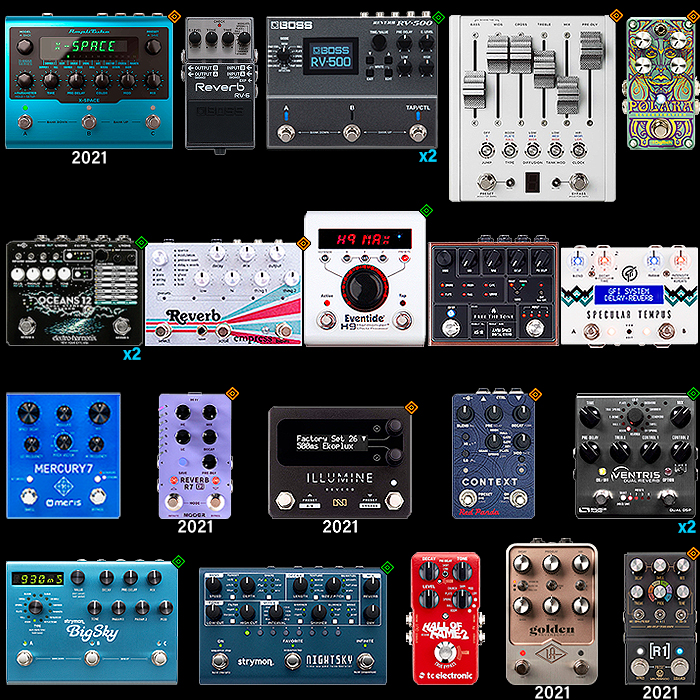
Since we have had 5 cool new and formidable Stereo Reverb pedals this year - it seems opportune to review the category and figure out which are the standout options and alternatives - past and present.
My own journey into Reverb started with the Strymon BigSky - which was my mainstay for a while, then Source Audio announced its new Dual-Channel Ventris and I was very keen on that - but that edition was very slow to materialise, and so I moved instead to Boss’s excellent RV-500 next.
The Ventris finally materialised and became my mainstay then, supplemented by the addition of the Eventide H9 Max - which I largely acquired on the basis of its Reverb algorithms. Next came the Electro-Harmonix Oceans 12 which had an all-too brief a residence as it was soon ousted by the very impressive Strymon NightSky ’Build-a-Reverb-Workstation’ - which is just genius and somewhat underrated. Last year I also added the Copper FX Arcades (Mono), with Reverb Card for this category - so for my main pedal-chain sequence - I have 4 pedals that deliver Reverbs - the Arcades (Mono - 8), Boss GT-1000 Core (Stereo - 10), NightSky (Stereo 33) and H9 Max (Stereo - 12) - which is pretty decent coverage all-round - and with at least 33 Algorithms at my disposal - while the NighSky does quite a bit more than that in absolute terms!
Note that in the above visual I’ve put in the ’2021’ date stamp for those Reverbs released this year, while ’x2’ denotes Dual-Channel variety. I’m a little surprised that we don’t yet have more dual-channel Reverb varieties besides the forerunner RV-500 and Ventris, and the fairly recent Oceans 12? Furtehermore little green diamonds mark out the 6 pedals here that I alraedy own and have in rotation. While the little orange diamonds indicate those that are under consideration for future acquistion - with the Neunaber Illumine obviously the uppermost amongst those choices.
I’ve tried to include the best representatives at the different enclosure sizes - and here we have 5 Compacts - including the discontinued DigiTech Polara, then 9 Medium size boxes of various orientations, then 5 Big Boxes, and 1 Xtra-Large (CXM 1978)!
I had intended to get the Chase Bliss Audio Automatone CXM 1978 Studio Reverb next - but several of this year’s releases have sort of put a spanner in those works. In heading into this article - I’ve pretty much made my mind up now that the Neunaber Illumine will be the next mainstay - while I find each of the AmpliTube X-Space, Mooer R7 X2, and Walrus Audio Mako Series R1 particularly compelling too! I may end up with as many as 3 or 4 new Reverb pedals from this year - which inevitably means that the CXM 1978 acquisition gets pushed back further into next year. Note also that I’m pretty keen on the Empress Reverb too - while I’m always secretly hoping that Steve Bragg et al. will do an EchoSystem-style Dual-Channel version of that some day. Until someone tells me that is not happening - I’m holding back my acquisition of said Empress Reverb!
I’ve done a lot of due diligence in curating and refining my final selection of 20 - and hopefully the below details will justify how and why those particular 20 made the cut.
The selection consists of (alphabetical) :
- [2021] AmpliTube X-Space Reverb Workstation : 16 Algorithms - $300
- Boss RV-6 Stereo Reverb : 8 Algorithms - $154
- Boss RV-500 Dual-Channel Reverb Workstation : 14 Algorithms - $360
- Chase Bliss Audio Automatone CXM 1978 : 3 Algorithms - $899
- DigiTech Polara Stereo Reverb (Discontinued) : 7 Algorithms - $170
- Electro-Harmonix Oceans 12 Dual-Channel Reverb : 29 Algorithms - $257
- Empress Effects Reverb : 32 Algorithms - $449
- Eventide H9 Max : 12 Algorithms (inc. Blackhole) - $699
- Free The Tone Ambi Space AS-1R : 6 Algorithms - $380
- GFI System Specular Tempus Reverb + Delay : 16 Algorithms - $349
- Meris Mercury 7 Reverb : 2 Algorithms - $299
- [2021] Mooer R7 X2 Reverb : 14 Algorithms - c$129-$149 Estd.
- [2021] Neunaber Illumine Reverb : 17 Algorithms - $379/$479
- Red Panda Context V2 Reverb Workstation : 8 Algorithms - $299
- Source Audio Ventris Dual Reverb : 14 Algorithms - $399
- Strymon BigSky Multidimensional Reverb : 12 Algorithms - $479
- Strymon NightSky Time-Warped Reverberator : Variable Algorithms - $429
- TC Electronic Hall of Fame 2 Reverb : 11 Algorithms - $149
- [2021] UAFX Golden Reverberator : 5 Algorithms - $399
- [2021] Walrus Audio Mako Series R1 High-Fidelity Reverb : 6 Algorithms - $349
And these are 20 more Honourable Mentions :
- Cusack Music Resound Digital Reverb : 8 Algorithms - $279
- Death By Audio Rooms Stereo Reverberator : 6 Algorithms - $429
- DigiTech Supernatural Ambient Reverb (Discontinued) : 7 Algorithms - $249
- Dreadbox Darkness Digital Stereo Shimmer Reverb : 2 Algorithms - €259
- Electro-Harmonix Cathedral Stereo Reverb (Discontinued) : 8 Algorithms - $215
- Eventide Space Reverb : 12 Algorithms - $499
- Flamma FS02 Reverb : 7 Algorithms - $88
- Flux Effects Liquid Ambience Stereophonic Reverb : 3 Algorithms - $349
- GFI System Skylar Reverb : 4 Algorithms - $199
- Keeley Delay Workstation : 8 Algorithms - $299
- LastGasp Transroom Analog Modulation Reverb : Variable Algorithm - $269
- Mooer Ocean Machine Dual Delay + Reverb : 9 Algorithms - $299
- Mr Black SuperMoon Eclipse : 2 Algorithms - $280
- Neunaber Immerse Reverberator : 8 Algorithms - $249
- Poly Effects Digit Quad Delay, Reverb, Mixer and Cab Simulator : Variable Algorithm - $399
- Seymour Duncan Silver Lake Dynamic Reverb : 8 Algorithms - $349
- Source Audio Collider Delay + Reverb : 7 Algorithms - $349
- Strymon BlueSky Reverberator : 6 Algorithms - $299
- TC Electronic Arena Reverb (Discontinued) : 11 Algorithms - $149
- Vongon Ultrasheer Stereo Pitch Vibrato and Reverb : 2 Algorithms - $419
This article will only focus on my Top 20 choices - do let me know how much you agree with my rationale! :
IK Multimedia AmpliTube X-Space Reverb Workstation : 16 Algorithms - $300
This for me was the most successful of the recently revealed AmpliTube X-Gear Lineup - and has one of the best mix of Algorithms - including my essential 'Reverse' Mode. It sounds suitably impressive too in the recent sound samples per the above demo. There is much to like here - with clear, consistent and smart controls - while I'm not yet clear on the depth of granularity here - but this is definitely a compelling choice with this particular set of 16 Algorithms - and should provide fairly stiff competition for the Boss RC-500 and Strymon BigSky in particular.
There's lots to like here, and this is definitely a contender for me - I will likely be getting involved with this pedal in one way or another - certainly one to watch out for!
Controls - Model / Back, Preset / Save, Parameter / Setup, Time, Pre-Delay, Color, Modulation, Mix, A|B|C Footswitches - Bank Down/Up.
Algorithms :
- Shimmer 1 - Complex Shimmer with Feedback
- Shimmer 2 - Shimmer without Feedback build-up
- Hall - Big Room Reverb
- Room - Small Room Reverb
- Chamber - Aggressive / Intense spatial Reverb
- Church - Long-Tail Reverb
- Plate - 80's style Metallic Plate Reverb
- Spring - Spring Tank Reverb
- Swell - Fading In/Out Swell Effects
- Gate - Customizable Gater Reverb
- Reverse - Reverse Delay Trails
- Early Reflection - as per Boss RV-500
- Extreme - Mix of two Revebrs - Modulated Plate Reverb + Vintage Phase Reverb - for extreme modulated tails
- Ethereal - Airy and Moving Modulated Plate Reverb
- Bloom - Blooming Style Swell Effect
- Magnetic - Accentuated Modulated Spatial Reverb with 'Floating' dynamic
Key Features :
- 16 available reverberation model algorithms
- 5 tone-shaping controls and 1 multi-purpose parameter knob
- Hundreds of factory presets and hundreds of free slots for custom presets
- Press-and-hold for custom functions
- True or soft bypass selectable
- Full MIDI Implementation
- Expression pedal input with the possibility to create custom macros controlling multiple parameters at once
- USB connection and Librarian app for preset management
- Can be used to record guitar tracks acting as an audio interface
- Software version with same models available for Mac and PC
- Built in cabinet simulator
Boss RV-6 Stereo Reverb : 8 Algorithms - $154
Boss weirdly has just 2 current Reverb pedals, and is sorely missing a mid-size option. That said the 8-Mode RV-6 is still one of the best choices of Compact Stereo Reverb - with a great mix of Algorithms for its size and suitably impressive tones.
As I tend to operate more at the Workstation Pedal level - most of the compacts are less interesting for me - even though my favourite overall pedal format is the compact enclosure. However I am accustomed to operating multiple presets at the workstation level - and so the appeal of something without presets is somewhat lesser.
Controls - Effect Level, Tone, Time, and Mode.
Algorithms :
- Room
- Hall
- Plate
- Spring
- Modulate
- Dynamic (Reactive Depth Sensitivity)
- Shimmer
- +Delay (EchoVerb)
Key Features :
- Compact and versatile reverb pedal with rich, expansive sound
- Dial in sophisticated, top-level reverb tones quickly with simple controls
- Newly developed studio-grade algorithms powered by cutting-edge BOSS technology
- Eight sound modes provide a diverse range of ready-to-play reverb effects
- Shimmer, Dynamic, and Delay+Reverb modes deliver lush, immersive textures sought by modern players
- Input for controlling reverb level with an optional expression pedal
- Supports mono or stereo operation
Boss RV-500 Dual-Channel Reverb Workstation : 14 Algorithms - $360
As I mentioned in the intro - Source Audio was the first to announce a Dual-Channel Reverb Workstation - but it was a long time from the announcement until the actual official launch - and in the meantime Boss had sneaked past on the inside lane - and the RV-500 came out quite a bit before the Ventris. I'm glad for the delay really as I got plenty of times to get to grips with Boss's masterpiece - which really rewards your patience - while getting to grips with the footswitch defaults / programming was almost the end for me - lots of granularity here, and a little complexity to - even though the menu system is fairly decent.
I spent most of my time on the Space Echo mode, and had some fun with the 3 x SFX varieties, Non-Linear and Early Reflection. The Algorithm selection is looking a little old fashion nowadays - but there are still some killer tones to be found in amongst these. The RV-500's secret weapon is that you can select a delay on each of its Dual Channels - meaning the incredible delivery of 4 layers / effects simultaneously! There's no doubt that this is a powerhouse - but Boss falls foul of lack of updates really. as say compared the Empress Reverb - which has steadily added further algorithms - to where it has 35 nowadays - Boss's 14 look a little paltry in comparison!
Nonetheless this is most definitely a Killer Reverb - with all manner of tricks up its sleeve and for my friend Scott 'Knobs_Demos' Harper to like it - it must be pretty special indeed!
Controls - Mode, Time/Value, Pre-Delay, Effect Level, Down/Up, Exit, Edit + Write, Low, and High.
Algorithms :
- Room
- Hall
- Plate
- Spring
- Shimmer
- Fast Decay
- Early Reflection
- Non-Linear
- SFX Lo-Fi
- SFX SlowVerb
- SFX Storm
- Dual
- SRV (Roland SRV-2000)
- Space Echo (Roland RE-201)
Key Features :
- Studio-level sound with first-in-class 32-bit AD/DA, 32-bit floating point processing, and 96 kHz sampling rate
- 14 modes with 21 reverb types, all with deep editing parameters
- Includes a wide range of reverb types from standard to advanced, plus Roland classics such as the SRV-2000 Reverb and RE-201 Space Echo
- A/B Simul mode allows you to use two reverb patches at once
- Selectable carryover function allows reverb tails to continue with patch change or effect bypass
- Powerful DSP provides independent digital delay with modulation along with each reverb patch
- Graphic LCD and intensive real-time control options
- 297 onboard patch memories and hands-on controls
- Selectable buffered-bypass or true-bypass operation
- MIDI I/O for interfacing with MIDI control devices
- USB-MIDI for connecting to the RV-500 Editor/Librarian or a DAW
- Runs on four AA-size batteries or PSA-series AC adapter
Chase Bliss Audio Automatone CXM 1978 : 3 Algorithms - $899
Meris are obviously the creators / programmers for the CXM 1978's Reverb Algorithms - which are honed from and amazingly even more pristine than those found on their superb spacey Mercury 7 - but largely matched to the legendary Lexicon 224 Digital Reverb too. At first glance - with just 3 Algorithms it would seem you have been somewhat short-changed for you $899, but the combination of the Automatone format with Pristine Studio-level Reverbs is just all killer - with so many clever innovations.
To my mind, and besides its slightly over-sized dimensions - the Automatone format is the absolute perfect, and most visibly intuitive pedal topology - setting and recalling presets is such a breeze here - and once you've got used to the combination of Bass and Mids controls setting the Reverb Decay Time - operating such a device is a really joy. The only downside here really is the enormous price-tag - if you have the budget it's definitely worthy owning- while it mines a slightly different furrow to the 10+ Reverb Workstation types here.
This has long been on my wishlist - it was on it before the Strymon NightSky came out - but took longer to materialise - much in the same way as the Source Audio Ventris vs the Boss RV-500. I have always intended to get the CXM 1978 - and it will happen eventually - but obviously its offsets quite a lot of pedals - where I can get 8 or 9 pedals for the price of that 1. It was all set to happen this year, but I'm more tempted by some of the newer entries - in particular the Neunaber Illumine - so this gets knocked back to next year most likely - unless I have some sort of windfall this year!
Controls - Bass *, Mids*, {* Reverb TIme}, Crossover, Treble, Mix, PreDelay, Jump : Off/0/5, Type : Room / Plate / Hall, Diffusion : Low / Med / High, Tank Mod : Low / Med / High, Clock : HiFi / MidFi / LoFi, Preset Footswitch - Hold for Bank, Bypass Footswitch - Hold for Save
Algorithms :
- Room
- Plate
- Hall
Key Features :
- Moving Faders with 30 Presets across 3 Banks
- MIDI control
- 32 Bit AD/DA
- Three Classic Algorithms : Room, Plate, Hall
- Adjustable Decay Crossover for fully Shapeable Reverb Tails
- Expression pedal control
- Optional fully balanced I/O, Stereo input and output
- Internally Boosted +/-15V Rails for line level input
- Dimensions: 5.75" x 6.5" x 2.5"
- Power: 9V Center Negative ~500 mA
DigiTech Polara Stereo Reverb (Discontinued) : 7 Algorithms - $170 when new
Now alas discontinued, this borrows healthily from sibling and brand stablemate Lexicon - the king of the Studio Reverbs! This has always been something of an unsung gem - which several players still deploy as a secret weapon - along with its predecessor - the Supernatural Ambient Reverb.
7 really cool modes here including Reverse - and the unique 'Halo Reverb' which is pretty much exclusive to this pedal. I had always intended on getting one of these for the collection some day and probably still will - prices on Reverb.com are currently circa $200-$250 equivalent for Mint editions. Where DigiTech were selling them for as little as $170 before they got discontinued - I will likely snap one up if I can get it around or just under that level!
Controls - Level, Tails : Off/On, Type : Room / Plate / Reverse / Modulated / Halo / Hall / Spring, Liveliness, Decay.
Algorithms :
- Room
- Plate
- Reverse
- Modulated
- Halo
- Hall
- Spring
Key Features :
- Seven Inspirational Lexicon® Reverbs
- Unique Halo” reverb with Cascading Octaves interspersed in the Reverb Decays
- Independent Level, Liveliness, Decay and Type Controls
- Stereo Inputs and Outputs
- Soft Click Footswitch
- Reverb Tails On/Off Toggle Switch
- True bypass
- 9V DC [-] 125 mA Current Draw
- Dimensions : Length 4.4", Width 2.65", Height 2.0"
- Weight - 1lb
Electro-Harmonix Oceans 12 Dual-Channel Reverb : 29 Algorithms - $257
This is actually a marvellous relatively compact unit - which has 12 Reverb Engine Types which yield a total of 29 algorithms - 2 or 3 per type. Alongside the Boss RV-500 and Source Audio Ventris this is one of the very few units that does dual simultaneous Reverb effects - and has all kinds of other smart features - like the ability to apply Lo-Fi modulation / degradation on each Algorithm.
On pictures it all seems very intuitive and straightforward - but as the pedal is so small relative - all those tiny legends are somewhat illegible in real life - and those tiny knobs are a little fiddly. This is probably far better as a desktop unit as it's much easier to manipulate from that level - while you can't always clearly discern what's going on on the floor - and what you need to do to tweak it. So a really cool execution overall - but somewhat fiddly in live usage. This is partly why I'm leaning towards the clearer screen commands of the Neunaber Illumine - which is a similar size - that relies far more on its digital menus - which could be slightly clearer but is also a little clunkier in some ways - whereas for the Oceans 12 everything is immediately accessible on the surface for instant tweaking.
This pedal was in my chain all too short a time as the Strymon NightSky arrived only a couple of months or so later - when to be fair I had not fully got to grips with the Oceans 12 - it's a hugely impressive unit - with great sounding Reverbs - just a touch impractical for me to operate - perhaps younger folk with eagle-eye night-vision are better off here!
Controls - Expression Mode, Momentary, Tails, Function, Mode : 1 / 2 / 3 / Lo-Fi / Tide, Reverb Type : Room / Spring / Plate / Reverse / Echo / Trem / Mod / Dyna / Auto-Infinite / Shimmer / Poly / Resonant (Dual Mode), Parameter 1, Parameter 2, FX Level / Infinity Level, PreDelay / Send Level, Time / Lo-Fi, Tone / Tide, Select A/B, Left Footswtich Reverb A, Right Footswitch Reverb B.
Algorithms :
- ROOM – 2 Modes : Reverb algorithms modelled after a lively Room and a spacious performance Hall
- SPRING – 2 Modes : Vintage 1962 Fender 6G15 tube reverb emulation and the spring algorithm from the EHX Holy Grail
- PLATE – 2 Modes : Two emulations of the smooth, metal Plate rack reverb often used in high-end recording studios during the 1960s and ‘70s
- REVERSE – 2 Modes : A Reverse reverb effect as well as true reversed echoes
- ECHO – 3 Modes: An EchoVerb digital delay with various echo rhythms feeding into a Plate reverb
- TREM – 3 Modes : A classic, periodic volume envelope with various wave shapes applied to both the wet and dry mix of a Hall reverb
- MOD – 3 Modes : Combinations of Chorus and Flange reverbs that create rich reverb tails
- DYNA – 3 Modes : Three dynamic, experimental reverb algorithms: Swell, Gate and Duck
- AUTO-INF – 3 Modes : Auto-Infinite reverb (with optional Chorus or Flange) that ’listens’ to your playing and crossfades to a new reverb wash upon detection of newly struck notes
- SHIMMER – 2 Modes : Two configurations of a rich Octave-Shifted reverb wash
- POLYPHONIC – 2 Modes : Two configurable bi-directional Pitch Shifts that add dimensionality to the reverb tail
- RESONANT – 2 Modes : Reverb excited by Tuneable Resonators and Configurable Self-Oscillating Filters on the reverb tail
Key Features :
- 2 Simultaneous Independent Stereo Reverb Engines
- Series and Parallel Control for Dual Reverbs
- 12 Reverb Engine Types
- 29 Total Reverb Modes (as above)
- 24 Presets
- 7 Control Knobs, 6 Buttons, Dual Footswitches
- Tide Control for Stereo Imaging Adjustment
- Lo-Fi Control
- Infinite Attenuation Control
- Tap-Tempo for Pre Delay Time, Echo Time and more
- Power Supply : 9V DC [-] 200mA
- Dimensions : 121(w) x 102(l) x 57(h) mm
- Weight : 400g
- Price : $238 / £229
Empress Effects Reverb : 32 Algorithms - $449
This is a totally killer Reverb and I really should own a unit already as the Empress EchoSystem is my favourite Delay Unit of all time - just ahead of the Boss DD-200 and Strymon Volante. Few can compete with this impressive bank of Reverb flavours with all the essentials covered here across 32 really cool Algorithms.
I've always hoped that Empress though would do an EchoSystem exercise on the Reverb - and introduce all those Dual modes that make the EchoSystem extra special - so I'm kind of putting of this acquisition in the hope of an even better unit materialising some day soon. While Empress have been so occupied with the Zoia of late - I'm not sure how likely a Reverb Upgrade / Re-Tool is. Until Steve Bragg tells me that there isn't going to be a Reverb 2 with all that extra EchoSystem functionality - I will hold on a while longer.
This is such a special unit - I really should have one already - while there's all kinds of interesting new options out there too - and I'm still encouraged to try out the Neunaber Illumine first - I will most definitely have an Empress Reverb some day though! While I feel too that both pedals could be improved a little with some sort of screen - even if it just shows the Thing 1 and Thing 2 variables you are changing!
Controls - Mode : Hall / Plate / Spring / Room / Sparkle / Modulation / Ambient Swell / Delay + Reverb / Reverse / Ghost / Lo-Fi / Beer, Decay, Mix, Output, Low, Hi, Thing 1, Thing 2, Presets, Select Footswitch, Save Button, Scroll Footswitch, Bypass Footswitch.
Algorithms :
- Concert Hall
- Modern Hall
- Classic Plate
- Studio Plate
- Bright Spring
- Dark Spring
- Overdriven Spring
- LA Studio (Room)
- Sparkle
- Glummer (Sparkle 2 - Octave Up+Down)
- Modulated
- Chorus Reverb (Modulated 2)
- Flanged Reverb (Modulated 3)
- Tremolo Reverb (Modulated 4)
- Triggered Swell
- Gated Swell with Octave
- Freezification (Ambient Swell)
- Seed (Ambient Swell - Growing Tail w/ Modulation)
- Single Tap Delay (Delay + Reverb 1)
- Blendable Delay (Delay + Reverb 2)
- Filtered Feedback Delay (Delay + Reverb 3)
- Skitter (Delay + Reverb 4 - Delay Lines that Morph into Reverb)
- Reverse with Decay
- Reverse and Stop
- Reversed Delay
- Ghost (Spooky Resonant Decay)
- Casper (Friendlier Less Spooky Ghost 2)
- 50's Radio (Lo-Fi 1)
- Warble (Lo-Fi 2)
- Glitch (Beer 1 - Reverb Tail through Aggressive Filter)
- Gated Reverb (Beer 2)
- Destroyer Pad (Beer 3)
Key Features :
- 32 studio quality algorithms as of firmware 6.0 and counting - 12 algorithm types, most with multiple variations. For example, vintage and studio plate, dark and bright springs. Also, as more algorithms get added you can update your pedal via the SD Card. It's the pedal that keeps on giving.
- Pristine Classic Sounds - pristine sounding classic hall, plate, spring and room sounds that rival or surpass studio units costing many times more.
- Ambient Sounds - A complete palette of tweak-able ambient sounds that offer the creative player so much territory to explore and make their own.
- Easy to use and fast to dial in - All the algorithm controls are sitting on a knob in front of you, no fiddling through laborious menus.
- Tap Functions - many algorithms have infinite hold settings or the ability to tap in delay time.
- Low Noise signal path - Features a signal to noise ratio of >104dB and maintains an analog dry path.
- Up to 35 Presets - Settings can be saved to 35 presets. With three stomp switches, accessing the presets is easy.
- 2 Preset Modes - Bank style or scrolling style preset modes.
- True Bypass and Buffered Bypass - It can be configured to run with true bypass or buffered bypass if you want to hear trails.
- Cabinet Simulator - 3 variations to choose from, perfect for recording, practicing or for gigs without an amp.
- Output Transformer - Get hum-free operation when operating in stereo with two amps. Output 2 is isolated with a transformer to eliminate nasty ground loops.
- High Quality Audio - 48kHz sampling, with 24 bit conversion and 32 bit internal processing.
- Analog Dry Path - Dry signal is left untouched, and blended with the wet signal using VCA. (no zipper noise, hooray!)
- Unsurpassed Connectivity - The Universal Control Port allows you to connect an expression pedal, external tap switch, control voltage, external audio input and MIDI - all using a standard 1/4" jack!
- Advanced Configuration Menu - The Advanced configuration menu lets you configure how your reverb works. Select from true or buffered bypass, 0-35 presets, MIDI configuration, Control port control(expression pedal, external tap, control voltage and MIDI) as well as which style of preset system to use, input signal pad, output transformer enable and more!
- Small Size - The enclosure measures approximately 5.7" by 3.75" by 1.75", which is delightfully small when considering all the features packed into this unit.
Eventide H9 Max : 12 Algorithms (inc. Blackhole) - $699
I actually principally acquired the H9 Max because of its Reverb Algorithms - Blackhole in particular, as well as the signature Josh Smith Rotary Vibrotone Mode / Settings. So I was rather non-plussed when the standalone Blackhole was released last year with all the same parameters - even though it has better granular surface controls.
The on-pedal interface for the H9 is just awful, and this pedal would have been a non-starter for me really without its Bluetooth function and App Support, as well as the Barn3 OX9 frame and additional footswitches. And even though this is a Multi-FX pedal really - I see it more as a more compact and better format for the Eventide Space pedal - where I mostly deploy Reverbs - the Josh Smith Rotary Settings, and occasional Delays and Harmonizers. The Multiband Distortions are fun for weirder more extreme sounds - while they don't really compete fully with analog gain and multi-drive pedals.
I've always hoped that they would improve the surface controls of this eventually - and was much encouraged by Eventide's new series of stand-alone effects units - even though they largely replicate what is already in the H9 - but with better and more granular surface controls.
Bluetooth and the App is really a godsend here - as I mostly leave the on-pedal interface alone with its clunkiness! Finally - you could argue that the exclusive Space Time Effect / Algorithm is sort of another - 13th Reverb Mode - but somewhat surprising Eventide hasn't added more!
Controls - Hot Knob, X, Y, Z, (X+Y+Z for Bluetooth On/Off), Presets, Central Rotary Controller, Active Footswitch, Tap Footswitch
Algorithms :
- DynaVerb
- TremoloVerb
- MangledVerb
- Blackhole
- DualVerb
- ModEchoVerb
- Shimmer
- Reverse Reverb
- Hall
- Spring
- Plate
- Room
Key Features :
The H9 Max can run all of the effect algorithms from our TimeFactor (delay), ModFactor (modulation), PitchFactor (pitch shifting), and Space (reverb) pedals as well as some created just for the H9.
- 52 Effects Algorithms in Total
- Bluetooth Connectivity
- H9 Control App - via Bluetooth
- 6 x H9 Exclusive Effects - Harmadillo (Harmonic Tremolo), HotSawz (Pitch-Tracking Monophonic Synth), CrushStation (Multiband Distortion), PitchFuzz (Fuzz + 3 Shifters + 2 Delays), Space Time (Modulation + 2 Delays + Reverb), Sculpt (Multiband Distortion 2)
- True analog bypass
- Real-time MIDI control
- Power supply included
- MIDI via DIN and USB
- Fast accurate tuner included
- Expression pedal and AUX footswitch input
- Sync to the beat with tap tempo or MIDI
- 9VDC, 500mA Current Draw, center pin(+)
- Dimensions 133 (H) x 118 (W) x 50 (D) mm
- Weight : 1.53lbs, 0.7kg
Free The Tone Ambi Space AS-1R : 6 Algorithms - $380
Japan's Free the Tone makes some wonderful workstation pedals including the Ambi Space Reverb, Future Factory Delay and Tri Avatar Chorus. The Reverb is the simplest of those - while each of its 6 Modes are richly expressive.
This is a great device for people that want something relatively simple - but still with Presets onboard. While this sort of fails my Presets Ratio test - where you should really have a preset available for each of the Modes onboard - meaning that the Ambi Space should have 6 really!
This is incredibly easy to setup and dial in and sounds suitably stellar with enough controls for added nuance. It's possibly a little too simple for my own preferences and needs - while I can see how lots of players would find this a perfect tool for the job!
Controls - Mode : Spring / Room / Cave / Plate / Hall / Serene, Mix, Tone, Decay , Pre Delay, Panel Mode : Preset / Manual, Edit/Save, On/Off Footswitch, Presets 1-4.
Algorithms :
- Spring
- Room
- Cave
- Plate
- Hall
- Serene
Key Features :
- The Ambi Space uses a dual core chip with a 32-bit main CPU and 32-bit co-processor and performs high speed calculations using the 32-bit high precision DSP to generate sounds comparable to those from rack mount effects units, although it is actually a compact effects unit
- Up to four settings of all knobs can be memorized as presets
- These four presets can be recalled by MIDI program-change numbers
- Six reverb modes are provided: SPRING, PLATE, ROOM, HALL, CAVE, and SERENE.
- In Free The Tone’s unique reverb modes “CAVE” and “SERENE”, sounds with a rich harmonic structure are created by complex reverberation patterns being added to the reverb sound in multiple stages to realize unprecedented, transparent and spatial reverb sounds
- Original (dry) sounds pass through the unit from input to output as analog signals and are mixed with reverb sounds by the internal analog mixer, so the unit can output signals without spoiling the original sound quality
- The unit contains one of the major features of the Free The Tone products, the HTS (Holistic Tonal Solution) circuit. It manages signals comprehensively from input to output so that there is no change in sound character when the effect is turned on or off
- 9V DC [-] 280mA Current Draw
- Dimensions (W x D x H) 120 x 102.3 x 58.5 mm, 4.72 x 4.03 x 2.3 inches (incl. protrusions such as footswitches, jacks)
- Weight approx. 385 g, 0.85 lbs (excl. accessories)
GFI System Specular Tempus Reverb + Delay : 16 Algorithms - $349
GFI System make my favourite all-time Multi-Modulator in the Synesthesia - with its now 38 different Algorithms. The Specular Tempus is almost as impressive with its overall 36 Algorithms - and certainly matches the Synesthesia in output quality, while its control topology is slightly clunky and old-fashioned comparatively, and rather leave quite a lot to be desired. There's lots of secondary / tertiary / compound functions on each knob - which you kind of need to delve into the manual to understand, and the way you recall the presets / Algorithms in 4 Banks is rather awkward too in many ways.
I did a mockup at the start of last year I think for a Specular Tempus in the same format as the Synesthesia - which would be totally killer. The Synesthesia is a much more intuitive unit than the Specular Tempus - while there is a learning curve for its 4 x knob functions - turn, quick press, press-hold, and press-hold+twist.
I've always quite liked the look of the Specular Tempus - it's fairly compact and really powerful with some fantastic sounding algorithms - while the slightly clunky control interface has put me off thus far - I would snap up a Specular Tempus in Synesthesia Form Factor though in a heartbeat!
Controls - Blend / Kill Dry / Bank-1, Decay / Time / Subdivision / Bank-2, Param / Tempo Unit / Bank-3, Intensity / Repeats / Tempo Scope / Bank-4, Footswitch A, View/Edit, Footswitch B.
Algorithms :
- Spatium
- Room
- Tile Room
- 70 ’ s Plate
- Spring
- Modulated
- Shimmer
- Swell
- Vortex
- Voices
- Anti-Shimmer
- Tremble
- Infinity
- Reverb + Digital Delay
- Reverb + Analog Delay
- Reverb + Echoes Delay
Key Features :
Studio-grade reverbs & delays in a compact pedal
Stereo In - Stereo Out
32 Presets
36 Algorithms (16 Reverbs + 20 Delays)
Tap-tempo (with 4 sub-divisions)
- Midi In
- Effects Loop : Send/Return
- Aux In/Out
Versatile controls via Aux-In, Aux-Out, and MIDI
Kill-Dry function
Analog dry-thru
DAC / ADC resolution : 24 bits.
Power 9V DC [-] 100mA Current Draw
- Dimension : 12 (L) x 9 (W) x 5.5 (H) cm
- Weight : 600 grams (1.2 lbs)
Meris Mercury 7 Reverb : 2 Algorithms - $299
This Vangelis / Bladerunner-inspired Reverb on the surface looks fairly minimal - with just 2 core Algorithms - while it's all about the depth in variation really - as all Meris devices have Dual / Secondary Knob Functions which give those pedals a rather extended operating range - here with lots of Pitch Vector / Pitch-Shifting Functions and Modulation variations.
This is a proper Sci-Fi Spacey Reverb - indeed for delivering those massive cinematic effects - and much like their former Strymon colleagues, Meris are masters of the DSP environment. Output and size-wise these pedals have always been impressive - and elements here are obviously partly the foundation for the CBA Automatone CXM 1978.
I'm not the biggest fan of having secondary knob functions - as you have to continually dial the knobs back to their primary positions after setting the alternative parameters - and there are no proper onboard presets here - without the use of MIDI or Meris's rather large 4-switch Footswitch. I only have one Meris effect to date because of this - the Hedra Polyphonic Pitch-Shifter and Delay. I fail to understand why Meris doe not properly label its pedal with the secondary functions - but then that is what its cousins at Strymon to too! In fact company Daydream Superlab has recognised the weaknesses and makes overlay facia plates for Meris devices - featuring both sets of control labels.
There's no questions about the high quality of Meris's DSP Algorithms - while some of the control topology aspects are more than a little clunky - and not particularly intuitive for me. I would much prefer dual-concentric controls here or similar!
Controls - Space Decay / Predelay, Modulate / Mod Speed, Mix / Pitch Vector Mix, Lo Frequency / Density, Pitch Vector / Attack Time, Hi Frequency / Vibrato Depth, Swell LED / Alt Function Switch, Bypass LED / Algorithm Select : Uptraplate / Cathedra, Sweet Fooswitch / Hold for Max Sauce Decay Sustain, Bypass Footswitch / On.
Algorithms :
Ultraplate - Fresh Plate Reverb with Fast Build-Up
Cathedra - Massive Slow-Building Wave of Cacophony
Key Features :
- Premium quality 24 bit A/D and D/A
- 32 Bit floating point DSP hardware
- -115 dB Signal to Noise Ratio (typical)
- Premium low noise Analog signal path throughout
- Auto Swell Envelope (variable and foot-switchable)
- Analog Devices JFET input circuitry
- Wet/Dry signal mix occurs in the Analog domain
- Selectable True Bypass (Relay) or Analog Buffered Bypass/li>
- Durable transparent blue powder coat over brushed aluminum
- Power 9V DC [-] Current draw < 150 mA
- Dimensions – 4.25″ wide, 4.5″ long, 2″ tall
Mooer R7 X2 Reverb : 14 Algorithms - c$129-$149 Estd.
This is full-circle for the merry-go-round between Mooer and Flamma - where Mooer first set the ball rolling with its R7 Mini Reverb - 7Modes / Presets - Room, Hall, Church, Cave, Plate, Spring, Mod. Flamma then came in with a Compact Stereo version of that with the same 7 Modes / Presets / Controls. And now Mooer has taken the baton again and raised the stakes to x2 / Double the Modes / Presets with Dual Footswitches - including Infinite Hold, Tap Tempo and Scroll Mode functions.
Essentially you have two banks of 7 flavours where the LED colours change for the second bank - you can either scroll by short sharp presses on the Select / Save push-button, or you can depress both Footswitches together to access 'Scroll Mode - where you navigate up and down the 14 Algorithms with the Right and Left Footswitches. Whats really cool here is that each of the Modes is a Preset too - and when you've tweaked the knobs to your desired outcome you hold down the Save / Select button to save to memory. This is a fantastic and really powerful Stereo Reverb Workstation - particularly as this form factor. The Mini R7 goes for around $99 - so I assume a minimum price of $129, possibly as much as $159 - very impressive all round though!
Controls - Hi-Cut, Mix, Low-Cut, Decay, Select / Save : Room / Hall / Church / Cave / Plate / Spring / Mod / Studio / Reverse / Warp / Shake / Crush / Shimmer / Dream, Pre-Delay, Infinite Footswitch, Bypass / On / Tap-Tempo, Hold down both to access Scroll Mode.
Algorithms :
- Room
- Hall
- Church
- Cave
- Plate
- Spring
- Mod
- Studio
- Reverse
- Warp
- Shake
- Crush
- Shimmer
- Dream
Key Features :
- 14 different types of high-quality stereo reverb
- Storable preset for each effect can be recalled quickly
- “INFINITE” function for endless reverb tail, a perfect choice for creating atmosphere
- Tap footswitch to change preset
- Trail On function allows effects to fade out naturally. You can toggle between ON and OFF seamlessly
- Full Stereo Ins and Outs
- Power 9V DC [-] Current Draw 300mA
- Dimension: 75mm (D) x 115mm (W) x 33mm (H)
- Weight: 0.334kg
Neunaber Illumine Reverb : 17 Algorithms - $379/$479
This is my current frontrunner for next Reverb Workstation - its combination of compact and neat form-factor - with that highly visible screen and 17 fantastic algorithms - makes is something of a shoe-in - even though the Empress Reverb has near twice as many Algorithms at 32 - and including the desirable Reverse Reverb.
My only apprehension here is that the Illumine has just 2 Push/Twist control knobs which manipulate everything - meaning you need to access Sub-Menus quite a lot, and scroll through the available Parameters individually - rather than being able to effect instant changes via tweaking semi-dedicated controls. I'm not sure how big an issue that will be - but I'm more than willing to take the gamble - particularly at the introductory price of $379 - and surely further Algorithms can be added in time - so we can get the Reverse flavour at some time in the future.
The quality of algorithms and overall capabilities of this pedal within that compact form factor seem killer though - and even though the EHX Oceans 12 at the same size offers 29 Algorithms - but then I have that already!
Controls - Menu / Sub-Menu, Parameter / Save, Preset Up / A/B Footswitch, Preset Down / Engage Footswitch.
Algorithms :
- Wet Plugin
- Wet V3
- Wet V1
- Plate
- Hall
- Vintage Digital
- Spring
- Shimmer
- Rumble
- Octaves
- Wet V3 + Echo
- Wet V3 + Detune
- Bloom
- Swell
- Infinte Hold
- Sustain
- Gated Plate
Key Features :
- 17 stellar Stereo Reverb effects cover all your reverb needs
- 50 professionally-crafted factory presets for superb tones right out of the box
- 50 user presets to customize and save your favourite settings
- MIDI input & thru/out - Controller mode replaces a simple MIDI controller
- Powerful, flexible expression control engine
- Use an external expression pedal or the built-in A/B switch with adjustable transition times
- Analog dry signal for low noise and zero latency maintains the integrity of your source tone
- Adjustable gain structure works with instrument or line-level inputs
- High contrast, wide viewing angle display is easy to read from a distance
- Small footprint with top jacks, ILLUMINE is easy to incorporate into your pedalboard.
- Power with a standard 9V DC [-] @ 100mA pedal power supply (not included). No need to run a separate power adapter or free up a high-current power port
- Manufactured locally in Orange County, California. Family owned and operated, Neunaber Audio is dedicated to bringing you the highest quality audio effects on the market
- MSRP $479, $379 Special Introductory Price
Red Panda Context V2 Reverb Workstation : 8 Algorithms - $299
I love pretty much everything that Red Panda does - and while I only have the Particle V2 Granular Delay to-date, I've always intended to get more, including this smart 8-Mode Reverb Workstation. I'm OK with Red Panda's use of TRS sockets - which need Y-Splitter Patch Cables, while I really prefer full Stereo Ins / Outs - but can appreciate the neatness of the form factor here - this is sort of half-way between compact and BB-size enclosure - which with Top-Mounted Jacks is really no wider than most Compact Pedal Footprints.
Again a lot of Secondary Knob Functions here - a la Meris and Strymon - but at least they are properly labelled on the device. I really like this pedal - while there is so much competition here that I don't know if this will ever rise to the top priority to ensure its acquisition - there's lots of other slightly higher priority targets for me - but I still really like this!
Controls - Blend / Balance, PreDelay / Delay, Decay / Feedback, Hi Freq Damping / Dynamics Ducking, Modes : Room / Hall / Cath / Gate / Rev / Plate / Spring / Grain / Tap Divisions, Low Freq Damping / Dynamics Threshold, Modulation / Modulation Rate, Shift / Secondary Functions Button, Preset / Infinity / Save Footswitch, On / Infinity / Trails Footswitch.
Algorithms :
- Room - fast buildup, good for thickening sounds
- Hall - slower buildup with longer initial delay
- Cath(edral) - emulates a large, reflective space
- Gate(d) - gated reverb with non-linear decay
- Rev(erse) - reverse reverb
- Plate - bright, dense studio plate reverb
- Spring - spring reverb
- Grain - granular reverb
Key Features :
- Navy blue texture powder coat with laser etched graphics
- 8 modes: Room / Hall / Cath / Gate / Rev / Plate / Spring / Grain
- Blend control, from dry to 100% wet
- Adjustable pre-delay, reverb time, and damping
- Analog dry signal.
- True bypass
- Stereo In/Out via TRS Y-Splitter Patch Cables
- Size: 4.7″ x 3.7″
- 1 year warranty
- Power 9V DC [-] Current Draw 100 mA
Source Audio Ventris Dual Reverb : 14 Algorithms - $399
The Source Audio Ventris is another of those brilliant and fairly special Dual-Channel Reverbs - alongside the Boss RV-500 and EHX Oceans 12. While the 12 Core Algorithms here are probably the best mix I have encountered - particularly for a fairly streamline selection.
There's much to love about the Ventris - and indeed it has been my mainstay Reverb pedal on-and-off for probably the longest time overall. But there are some quirks and easy improvements that could be made. For both the Ventris and Nemesis - it would be much handier if the core central Mode selector knob was clickable - that way you could simply click between Bank selections and have that reflected by an LED change - to access the Extended modes.
Also there are 4 / 8 onboard Presets - but they're not footswitch selectable scrollable. Here they should do similar to the Stone Deaf FX Tremotron - where a simultaneous press on both footswitches simply scrolls between Presets - or you could do something similar to recent Mooer R7 X2 - where you hold down Both Footswitches to access Scroll Mode - and then can page up / down with the Right and Left footswitches.
Controls - Time, Mode : Room / Hall / E-Dome / True Spring / Plate / Lo-Fi / Modverb / Shimmer / EchoVerb / Swell / Offspring / Reverse, Mix, Pre-Delay, Treble, Control 1, Control 2., Channel Selector : A / A+B / B, On/Off Footswitch, Option Footswitch.
Algorithms :
- Room
- Hall
- E-Dome (Enormo-Dome / Cavern)
- True Spring
- Plate
- Lo-Fi
- ModVerb
- Shimmer
- EchoVerb
- Swell
- Offspring (Filtered, Cascaded Arpeggiator Reverb)
- Reverse
- [+1] Outboard Spring
- [+2] Metal Box (Small Space with Extremely Reflective Surfaces)
Key Features :
- 14 Reverb Engines — Ventris features 12 onboard reverb engines accessible via the center selector wheel, plus an expanding collection of reverb engines available via the Neuro Desktop Editor and Mobile App
- 128 Presets — Save up to eight presets accessible via the onboard controls or save up to 128 presets recallable with MIDI program change (PC) messages
- Dual Reverb Processing — The Ventris Dual Reverb features two independent signal processors giving the pedal essential features like preset spillover and dual reverb effects
- True Spillover — Two individual signal processors make it possible to change from one preset to another without abruptly cutting off the reverb tail of the original preset (Note: Spillover is unavailable when creating simultaneous dual reverb effects (A+B on the toggle switch))
- Simultaneous Reverb Processing — Select the A + B toggle switch position and create dual reverb effects. Run two reverbs simultaneously in parallel, series, or left/right signal paths
- Selectable Footswitch — Choose from a variety of OPTION Footswitch assignments. Control options include preset scrolling, A to B or A plus B reverb toggling, reverb hold, runaway reverb, and tap tempo
- Hold (a.k.a. “Freeze”) Control — Use the OPTION switch to hold a small portion of the reverb tail in a continuous loop, essentially sustaining a note or chord until the footswitch is released. While the Hold function is engaged it is possible to play over the top of the loop with either a dry signal or the dry/wet signal from the second reverb processor
- Runaway Reverb — Similar to the Hold function, the Runaway Reverb uses the OPTION switch to loop a small portion of the reverb trail. But rather than maintaining a steady sustain, the loop is fed back into the reverb processor, creating a building self-oscillation effect
- A to B Reverb Toggling — Use the OPTION switch to toggle between any preset’s A and B reverb, or use it to toggle from a single reverb to reverb A + B
- Stereo Input and Output Jacks — Create dramatic stereo reverb effects or set up an external effects loop
- Analog Dry Through — For most of the reverb engines and signal routing options the dry signal remains an analog signal and does not pass through the signal processor at any stage while the pedal in engaged
- Deep Editing Functionality — Adjust additional parameters, save and share personal presets, and download bonus reverb engines with the Neuro Desktop Editor or Mobile App. (Check the Neuro tab for more details)
- Complete MIDI Functionally — Receives MIDI program change (PC) or continuous controller (CC) via the 5-pin MIDI DIN Input (also includes a MIDI Thru jack), the USB port, or in conjunction with the Neuro Hub.
- Universal Bypass — Select either buffered or true bypass
- Trails Mode — Rather than abruptly cutting off the reverb trails upon bypassing the effect, Trails Mode allows the Ventris Reverb’s trails to decay naturally
- Expression Control — Program simultaneous expression control to multiple knobs with independent depth and direction assignments for each. Compatible with all Source Audio expression pedals, the Hot Hand 3 Universal Wireless Effects Controller, and 3rd party 1/4” TRS (tip hot) expression pedals
- External Switching Capabilities — Choose from a variety of external control options with an external 1/4” TRS (tip hot) footswitch. Control options include preset scrolling, hold, runaway, tap tempo, and processor toggling
Strymon BigSky Multidimensional Reverb : 12 Algorithms - $479
So this was my very first Reverb that started me down this journey! Great to get first-hand experience of that magical Strymon sheen that so many love - for effortless use straight out of the box. And even though the Eventide Space was the first of this generation - the Strymon BigSky has still sort of become the benchmark. Strymon Reverb algorithms are undeniable gorgeous - while some find them overly polished and affected.
I don't much like the menu system here - but everything else is pretty stellar - and flitting though the presets is wholly effortless. This pedal was ousted by the RV-500, then Source Audio Ventris, then EHX Oceans 12, and NightSky - and where the next incumbent is about to be the Neunaber Illumine. I often bring the BigSky back into rotation though to remind me of my earliest halcyon days of reverb - and the BigSky is still impressive - while there are several more newer pedals that have somewhat more technical prowess. Still enduringly popular though - and rightly so!
Controls - Type : Room / Hall / Plate / Spring / Swell / Bloom / Cloud / Chorale / Shimmer / Magneto / NonLinear / Reflections, Value / Param / Global, Decay, Pre-Delay, Mix, Tone, Param 1, Param 2, Modulation, Footswitches A | B | C - Bank Down / Up.
Algorithms :
- Room
- Hall
- Plate
- Spring
- Swell
- Bloom
- Cloud
- Chorale
- Shimmer
- Magneto
- NonLinear
- Reflections
Key Features :
- Hand crafted, studio-class reverb algorithms deliver lush, gorgeous, and musically inspiring reverb experiences
- Twelve reverb machines to choose from: Room, Hall, Plate, Spring, Swell, Bloom, Cloud, Chorale, Shimmer, Magneto, Nonlinear, Reflections
- Seven front-panel tone shaping knobs: Decay, Pre-Delay, Mix, Tone, Mod, Param 1, Param 2 (Param knobs assignable per preset)
- Additional menu parameters allow for easy customization of reverb sounds
- 300 easily accessible and namable presets
- Press-and-hold Infinite Sustain and Freeze functions, saveable per preset
- Spillover and Reverb Persist modes, saveable per preset
- Selectable Speaker Cabinet emulation for direct-to-PA gigs or recording applications
- Three rugged metal footswitches for preset selection and effect bypass
- LED display for preset info, reverb decay time, and extended parameter control
- Multi-color preset LEDs (green for active preset, amber for edited preset)
- Full MIDI implementation allows extended control for those with more complex rigs
- Sturdy and lightweight light blue anodized aluminum chassis, with laser-etched artwork
- Studio-grade audio input and output jacks
- Stereo input and output
- Expression pedal input with selectable control over any knob or combination of knobs, saveable per preset (also configurable as external tap input)
- MIDI input and output
- Super high performance DSP in a compact form factor
- 32-bit floating point processing
- 366MHz SIMD SHARC processor core, capable of 2.4 Gigaflops peak performance
- Analog dry path for a zero latency dry signal that is never converted to digital
- Premium analog front end and output section
- Ultra low noise, high performance 24-bit 96kHz A/D and D/A converters
- 115dB typical signal to noise at 50% wet mix (120db at 100% dry mix, 109dB at 100% wet mix)
- 20Hz to 20kHz frequency response
- +8dBu maximum input level easily handles instrument and line signals
- Included 9V center-negative power supply (300mA minimum required)
- Dimensions: 6.75″ (171mm) wide, 5.1″ (130mm) deep
- Designed and Built in the USA
Strymon NightSky Time-Warped Reverberator : Variable Algorithms - $429
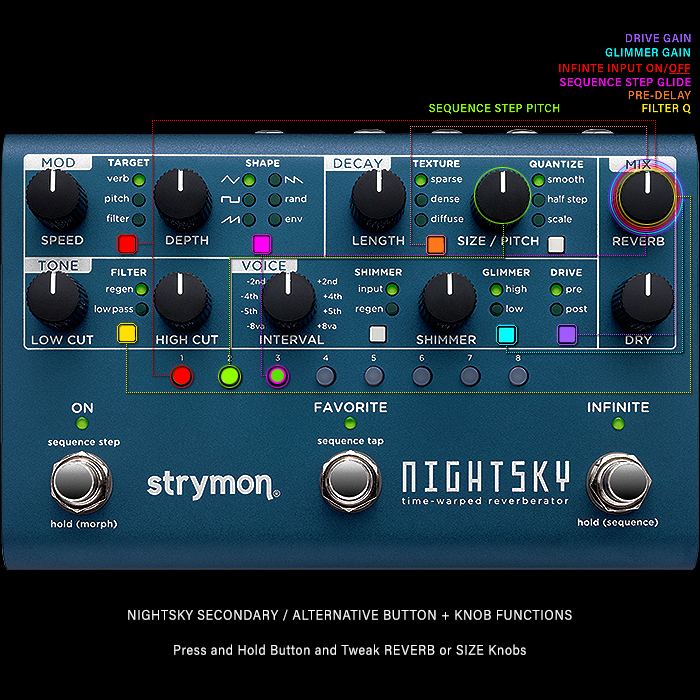
Strymon's NightSky is a genius totally different kind of Reverb - where you build it up tone and effects components grouped in 5 sectioned areas - Decay, Mix, Tone, Modulation and Voice. You further have an 8-step sequencers on the Reverb Trails / Trails - meaning that you can personally sculpt any number for very personal and specific outputs.
Obviously there is a somewhat steep learning curve here - with lots of Secondary Functions as illustrated in my above visual - but you can largely build anything you want from those basic components, and 3 essential core engines / algorithm types - Granular, Plate and Wash essentially.
I love what the NightSky delivers and chose it over the CXM 1978 at the time because it delivers a lot more variety. They're actually quite different things really - while the NightSky is the freshest Blue-sky thinking that has come to the Reverb genre for decades. I'm sore this will be honed and refined over time - and wie will eventually have and even more ingenious version of this - with a somewhat shallower curve of adoption!
Controls : MOD } Speed, Target : Verb / Pitch / Filter, Depth, Shape : Triangle / Square / Ramp / Saw / Random / Envelope, DECAY} Length, Texture : Sparse (Granular), Dense (Plate), Diffuse (Wash), Size/Pitch, Quantize : Smooth / Half Step / Scale, MIX} Reverb, Dry, TONE} Low Cut, Filter : Regen / Low Pass, High Cut, VOICE} Interval : -8va > +8va, Shimmer : Input / Regen, Shimmer, Glimmer : High / Low, Drive : Pre / Post, Sequence Steps: 1-8, On / Sequence Step / Hold (morph) Footswitch, Favourite / Sequence Tap Footswitch, Infinite / Hold (Sequence).
Core Algorithms :
- Sparse - Granular
- Dense - Plate
- Diffuse - Wash
5 Reverb Building Blocks :
- Decay - Length | Texture | Size/Pitch | Quantize
- Mix - Reverb | Dry
- Tone - Filter | Low Cut | High Cut
- Modulation - Speed | Depth | Target | Shape
- Voice - Interval | Shimmer | Glimmer | Drive
Key Features :
- Three selectable reverb types offer a wide variety of ambient textures
- MOD section with various waveforms to modulate the reverb or tone filters
- TONE section to sculpt the high and low EQ of the reverb
- VOICE section to enhance the aural spectrum of the reverb
- Adjustable SHIMMER for adding pitch shifting of up to +/- 1 octave to the reverb
- GLIMMER dynamically enhances high or low frequency harmonics for synth-like textures
- Pre or Post DRIVE to add saturated overdriven harmonics to the reverb
- Adjustable reverb core size to increase or decrease the space for reflections
- Independent REVERB and DRY level controls
- Step sequencer for programming rhythmic pitch variations of the reverb
- Access to 16 presets from the front panel and 300 presets via MIDI
- High impedance ultra low-noise discrete Class A JFET preamp stereo inputs
- Low impedance stereo outputs
- Input Level switch allows for both instrument and line level signals
- On, Favorite, and Infinite footswitches
- Expression pedal input allows the connection of an expression pedal, MultiSwitch Plus, or 1/4” to MIDI cable
- Full featured MIDI in/out supporting MIDI CCs, program changes, MIDI clock sync and more
- USB jack for controlling via MIDI from a computer or for performing firmware updates
- Analog dry path for a zero latency dry signal that is never converted to digital
- Premium JFET analog front end
- Ultra low noise, high performance 24-bit 96kHz A/D and D/A converters provide uncompromising audio quality
- Super high performance SHARC DSP
- 32-bit floating point processing
- 20Hz to 20kHz frequency response
- Audio Input Impedance: 1M Ohm
- Audio Output Impedance: 100 Ohm
- True Bypass (electromechanical relay switching) or selectable transparent Analog Buffered Bypass
- Strong and lightweight anodized dark blue aluminum chassis
- 9V DC power supply included
- Power requirements: maximum 9 volts DC center-negative, with a minimum of 300mA of current
- Dimensions:
- 4.5″ deep x 7″ wide x 1.75″ tall
- 114.3 mm deep x 177.3 mm wide x 44.5 mm tall
- Designed and built in the USA
TC Electronic Hall of Fame 2 Reverb : 11 Algorithms - $149
TC Electronic's Hall of Fame is still a valid Stereo Reverb Workstation choice in compact enclosure - while recent innovations are starting to leave the old guard a little bit behind - especially newer variants like Walrus Audio's R1, and Mooer's killer new 14-Algorithm R7 X2.
TC Electronic still has a couple of aces up its sleeves - the fact that you can pretty much Programme 3 of your own specific Reverb flavours and load to the pedal via TonePrint. Also the MASH Footswitch pressure-sensing technology - which gives you a sort of variable expression control based on the force and time / impact therefore of your foot on the Footswitch.
There were times that I considered getting this - but those are quite a few years ago now. I still think it's a compelling choice for some and fairly competitively priced - while there are other options out there currently which I prefer.
Controls - Decay, Pre-Delay : Short / Long, Tone, Level, Mode : Moon / Hall / Spring / Plate / Church / Shimmer / Modulation / LoFi / TonePrint 1 / TonePrint 2 / TonePrint 3, Mash Dynamic Footswitch.
Algorithms :
- Room
- Hall
- Spring
- Plate
- Church
- Shimmer
- Modulation
- LoFi
- TonePrint 1
- TonePrint 2
- TonePrint 3
Key Features :
- MASH Footswitch Technology
- New Shimmer reverb algorithm with octave pitch shifting
- 8 reverb types and 3 TonePrint slots
- TonePrint-enabled
- True Bypasss or Buffered Bypass
- Analog-dry-through
- Decay, Tone, and Level controls
- Easy battery access
- Small footprint
- High quality components
- Road-ready design
- Stereo In/out
UAFX Golden Reverberator : 5 Algorithms - $399
It seems fairly evident that Universal Audio designed its UAFX Series primarily as a Studio Line - versus practical gigging devices - that can be seen by the Single Onboard Preset and lack of MIDI support. Also the weird practice of competing customers to register before releasing 2 further Lexicon 224 Algorithms.
Operation of these devices is quite straightforward, but as Henning Pauly points out in his above review - the Knob Legends don't always function as labelled and there are a few quirks in operation - while nothing significant.
This is 3rd device here derived from Lexicon Algorithms - alongside the Chase Bliss Audio Automatone CXM 1978 Studio Reverb, and DigiTech Polara - and it pretty much matches the CXM 1978 for pristine output. The Universal Algorithms and plugins are typically fairly stellar so no surprises here. It also seems evident that the UAFX series is kind of going up agains the square / regular Strymon pedals - as they typically have just One Favourite Preset too! Albeit with more connectivity to store more presets via MIDI usually.
For my needs this pedal is not quite up to he level I need it to operate on functionally - a single onboard preset just won't do. I'm also suspicious of the requirement to register - as I think that will mainly be used to upsell further relatively pricey Algorithm upgrades - versus say the Empress Reverb - where all those upgrades have been free-flowing - and yes - free!
There's much to admire here - including a distinctive, unique and actually vert attractive milled aluminium enclosure - also the full Ins and Out top-mounted alongside a USB-C port. Supposedly there is some sort of Bluetooth functionality too for connecting to an App for further updates I presume. A great sounding Reverb for sure, but somewhat limited in scope by its approach.
Controls - Decay, PreDelay, Mix, Mode : Spring 65 / Plate 140 / Hall 244 / Plate 244 / Chamber 244, Store (Save), Variation : A/B/C, Bass, Treble, Modulation, On/Bypass Footswitch, Preset Footswitch.
Algorithms :
- Spring 65
- Plate 140
- Hall 224
- [Plate 224] - upon Registration
- [Chamber 224] - upon Registration
Key Features :
- Flagship, no-compromise stompbox offering the most authentic tube-driven spring, plate, and vintage digital reverbs ever captured in an effects pedal
- Three "golden unit" spring reverb tanks, pulled from classic '60's American guitar amps
- Three vintage German studio plate reverbs sourced from The Plant (Sausalito, CA)
- A trio of perfect, bit-for-bit vintage digital reverb algorithms from the late 1970s
- Store and recall your favorite preset, silent switching, true/buffered bypass and spillover/trails*
- Analog dry through, stereo/dual mono operation, and available modulation on each effect
- Free Hall 224 Chamber & Plate vintage digital reverb effect, downloadable at registration
- Power Requirements: Isolated 9VDC, centre-negative, 400mA minimum (PSU sold separately)
- Inputs: 2 x ¼” TS (input 2 for stereo connections)
- Outputs: 2 x ¼” TS (output 2 for stereo connections)
- USB Type-C for updates via computer
Walrus Audio Mako Series R1 High-Fidelity Reverb : 6 Algorithms - $349
I was actually very excited when this first materialised - and while I'm still impressed, I'm not quite as excited any more in the wake of the Neunaber Illumine and Mooer R7 X2. I determined a while back that I would get this as one of the most formidable Compact Reverb Workstatoins - and likely I will still acquire this some day. While in the world of shifting priorities - other preferences have taken its place in the queue.
The Neunaber Illumine with its initial promo price of $379 versus this one's $349 - is very compelling - as that looks to be a slightly handier device - with almost three times the number of Algorithms and limitless upgrade potential.
That said - the Walrus Mako Series R1 has some smart functionality of its own - particularly in how the Tweak and Tune Elements work - and the additional Swell control. So this is a compelling Reverb for sure - but slightly lower down the priority / pecking order since the start of the year!
Controls - Decay, Swell, Mix, Tweak Amount, Tweak Type : Rate | Depth | Pre Delay, Program : Spring / Hall / Plate / Big F'ing Reverb / Refract / Air, Tune Amount, Tune Type : Lo | High | X - Grit / Size / Diffusion / Glitch / Wind + Shimmer, Presets : A | B | C, On/Bypass Footswitch, Sustain / Latching Footswitch.
Algorithms :
- Spring - Classic Spring Tank Reverb with plenty of Drip; X-Tune adds a warm grit to the reverb decay
- Hall - The Ambience of Large Spaces; X-Tune controls the Room / Space Size
- Plate - Smooth Analog Plate Emulation with Even Diffusion, inspired by the EMT 140 et al; X-Tune adds warm grit into signal simulating hot signal into the plate
- BFR (Big F-ing Reverb) - Immense Cavers filled with choirs of angels!; X-Tune controls amount of diffusion applied to multi-tap delays
- RFRCT (Refract) - Hovering Glitch-Like Textures over a largely Diffused Reverb; X-Tune shapes the tone and fidelity / texture of the Glitch effect
- Air - Diffused Reverb with Subtle Shimmer and a rather crisp clarity to its decay; X-Tune controls % Amount of the Wind and Shimmer Elements within the Air Program
Key Features :
- Powerful and versatile multi-function stereo reverb
- Six studio-quality stereo reverb-programs: Spring, Hall, Plate, BFR, Refract, Air
- Each program is customizable to your taste and playing style
- Tweak knob controls Modulation and Pre Delay
- Swell knob controls a volume swell effect
- Tune shapes amount of low and high frequencies in the reverb signal
- Decay controls length of reverb
- Mix sets ratio of dry- to reverb-signal
- X Parameter is unique to program-specific features (size, drive, air, diffusion, …)
- Sus/Latch to momentarily sustain reverb or latch the present reverb decay
- Nine on-board presets
- 128 presets accessible via MIDI
- MIDI In/Out DIN connections
- Stereo or Mono operation
- Three bypass modes: true bypass, DSP+ true bypass (trails) and DSP bypass (trails)
- Powerful MAKO platform with Analog Devices SHARC processor
- 24-bit 48kHz A/D and D/A converters for high quality audio
- 32-Bit floating point processing
- 9-volt DC, Center Negative, 300mA minimum
- Power Supply not included
- Made in the USA
Final Thoughts

No doubt readers will throw some 'Whataboutisms' at me as some of their favourites have likely not made the cut. I do note these are my own preferences based on my own needs and likes. The Death By Audio Rooms is cool - but as is often the fas with DBA - the enclosure is rather oddly over-sized and not particularly pedalboard friendly - and I just have other preferences that appeal to me more.
You could say that strictly speaking the H9 is a Multi-FX and somewhat disqualified here - while I bought it principally for the sake of its Reverb Algorithms - more as a smaller form-factor Eventide Space. And the Specular Tempus is really a combination Delay + Reverb - while it does have 16 very strong Reverb Algorithms - so for me justifies its place on the list. In the Honourable Mentions / Alternative Selection - there is nothing which would oust any of the Top-20 entries - where I have though tried to be expansive - and clever different ensure sizes as best I could - some will argue that those should be sidelined in favour of some of the other big boxes like say the Seymour Duncan Silver Lake. In any case I've done a lot of due diligence here - and my own rationale aligns entirely honestly with these choices.
For the record - I own 6 of the ones featured in the Top 20 :
- Boss RV-500 Dual-Channel Reverb (x2)
- Electro-Harmonics Oceans 12 Dual-Channel Reverb (x2)
- Eventide H9 Max (Space)
- Source Audio Ventris Dual-Channel Reverb (x2)
- Strymon BigSky Multidimensional Reverb
- Strymon NightSky Time-Warped Reverberator
All those are currently active in the pedal-chain Rotation - with the NightSky the current incumbent, and likely the Ventris has the longest innings overall to-date.
I've singled out 8 Reverbs for my acquisitions / wishlist - where of course I won't acquire all - but several eventually :
- AmpliTube X-Space Reverb Workstation
- Chase Bliss Audio Automatone CXM 1978
- DigiTech Polara Stereo Reverb (Discontinued)
- Empress Effects Reverb
- Mooer R7 X2 Reverb
- Neunaber Illumine Reverb
- Red Panda Context V2 Reverb Workstation
- Walrus Audio Mako Series R1 High-Fidelity Reverb
Where it's already been decided that the Neunaber Illumine will be next - I will order one as soon as it comes up for sale - supposedly towards the end of this month. The CBA Automatone CXM 1978 is definitely down for acquisition - but you need to save up for that as the priciest one in the selection. So for sure I will likely have snagged an AmpliTube X-Space and Mooer R7 X2 well before then and probably a DigiTech Polara too if I find the right one of those.
As mentioned I'm kind of holding out for an EchoSystem Dual-Channel style version of the Empress Reverb - if that comes out that will shoot to the top of my list - as will a V2 Specular Tempus in the same form-factor as the superb Synesthesia.
The Red Panda Context V2 and Walrus R1 are now nice-to have - when the R1 was top of the wishlist back nearer its Winter NAMM launch.
I also almost inadvertently include the Cooper FX Arcades : Reverb Card here - before realising of course that it has Mono outputs - still some cool algorithms - but can't really sit in this specifically Stereo Workstations roundup!
As for my all-time favourite Reverb Workstation - I am somewhat undecided - I feel the NightSky should win some kind of prize for ingenuity - but I've actually yet to find the perfect combination of Algorithms, Form-Facto and Functions to tick all my boxes. Several here come close - but not one yet covers all the angles quite as well as I would like it to!
What about you dear readers - do you have your own favourites here - anything you feel I cruelly left out. And what will you be checking out for your next Reverb Workstation?







